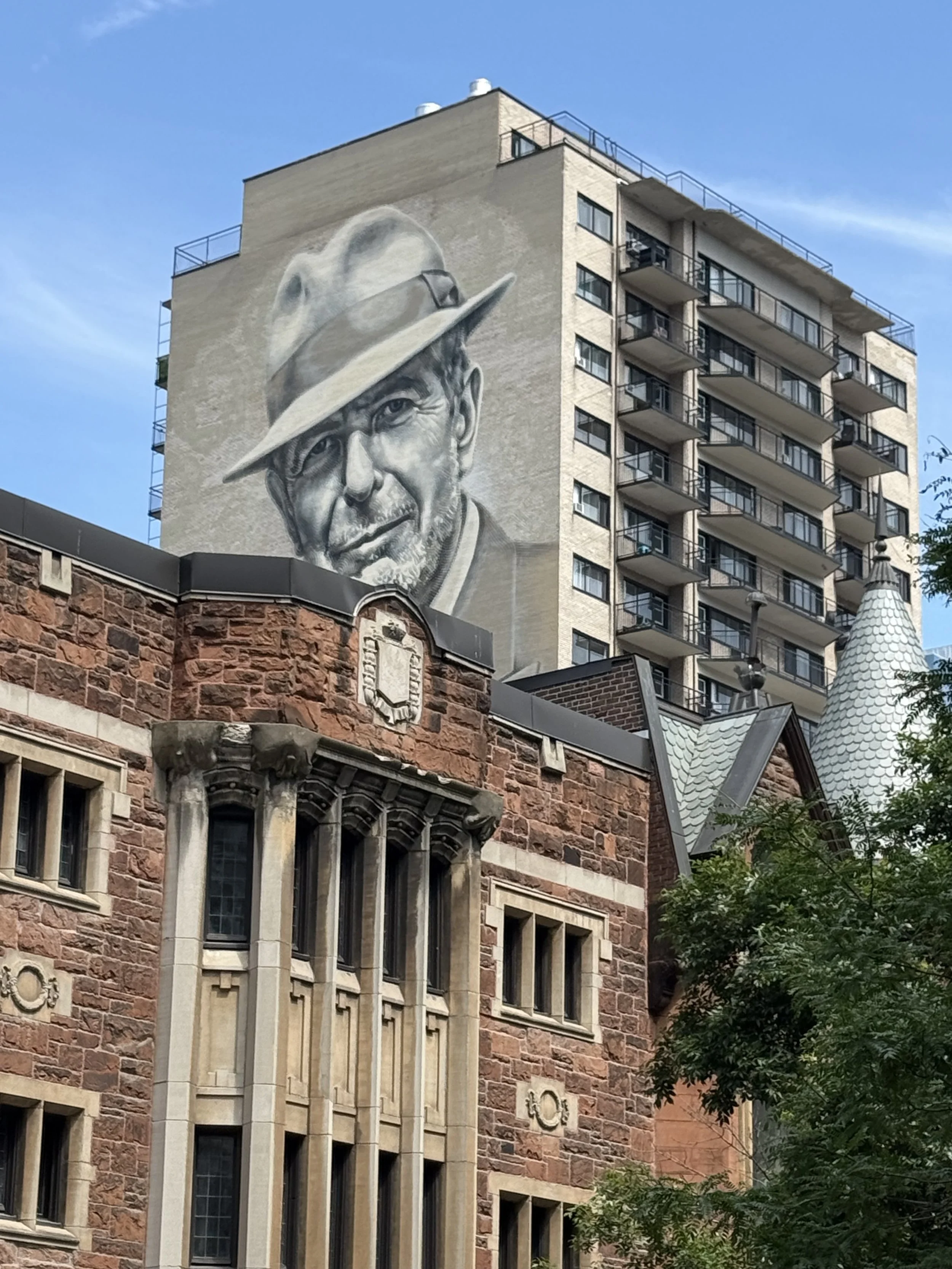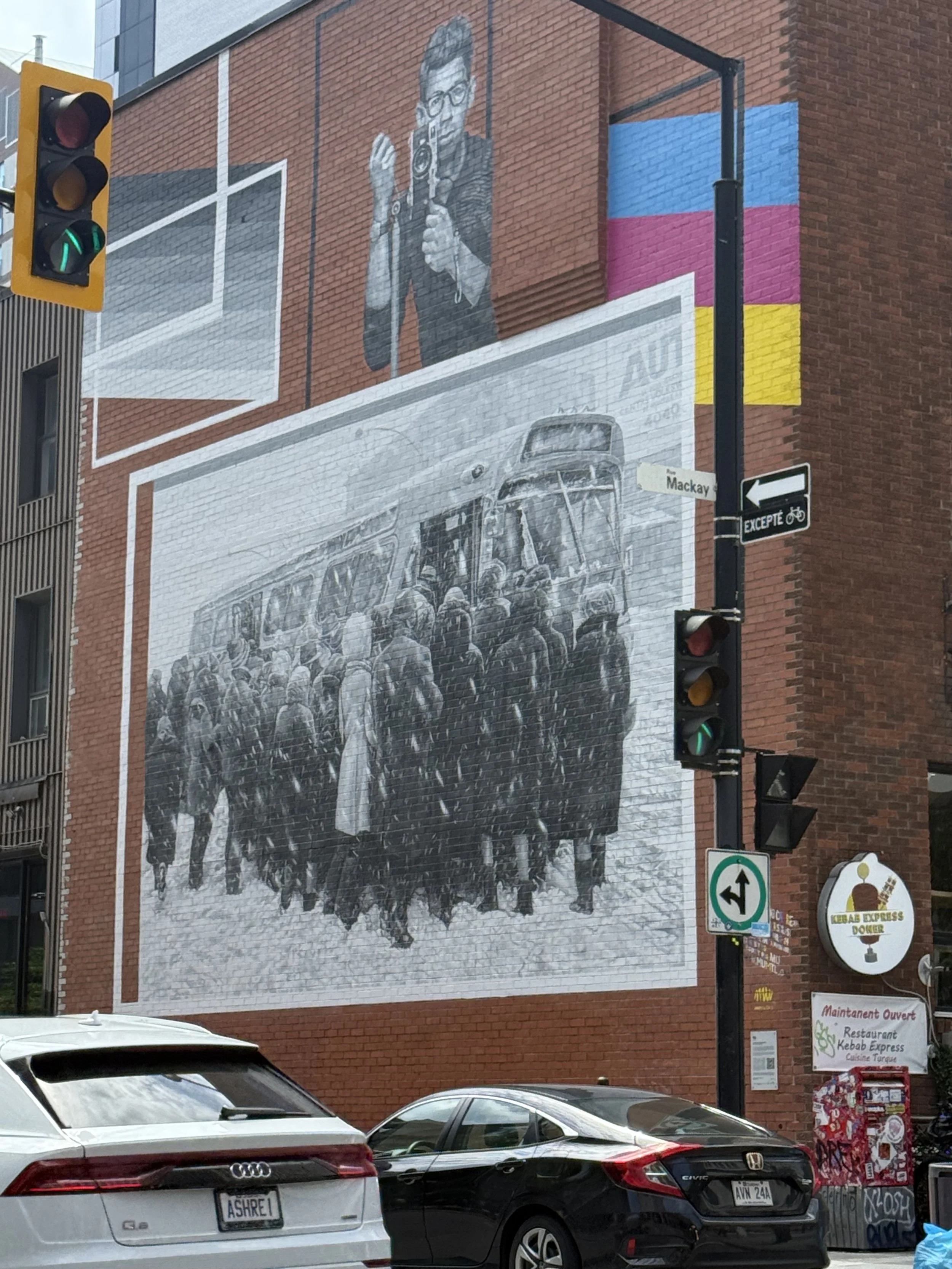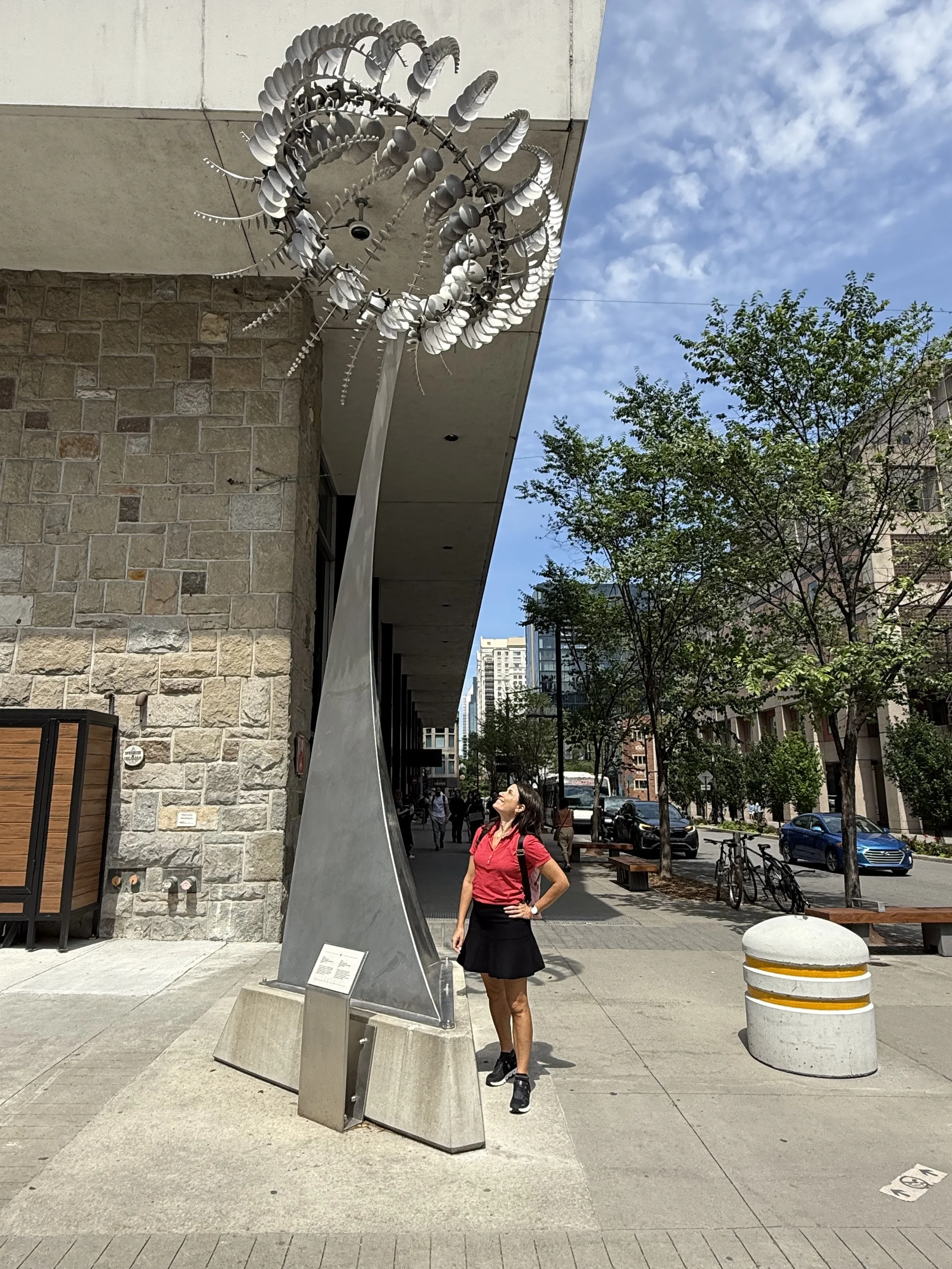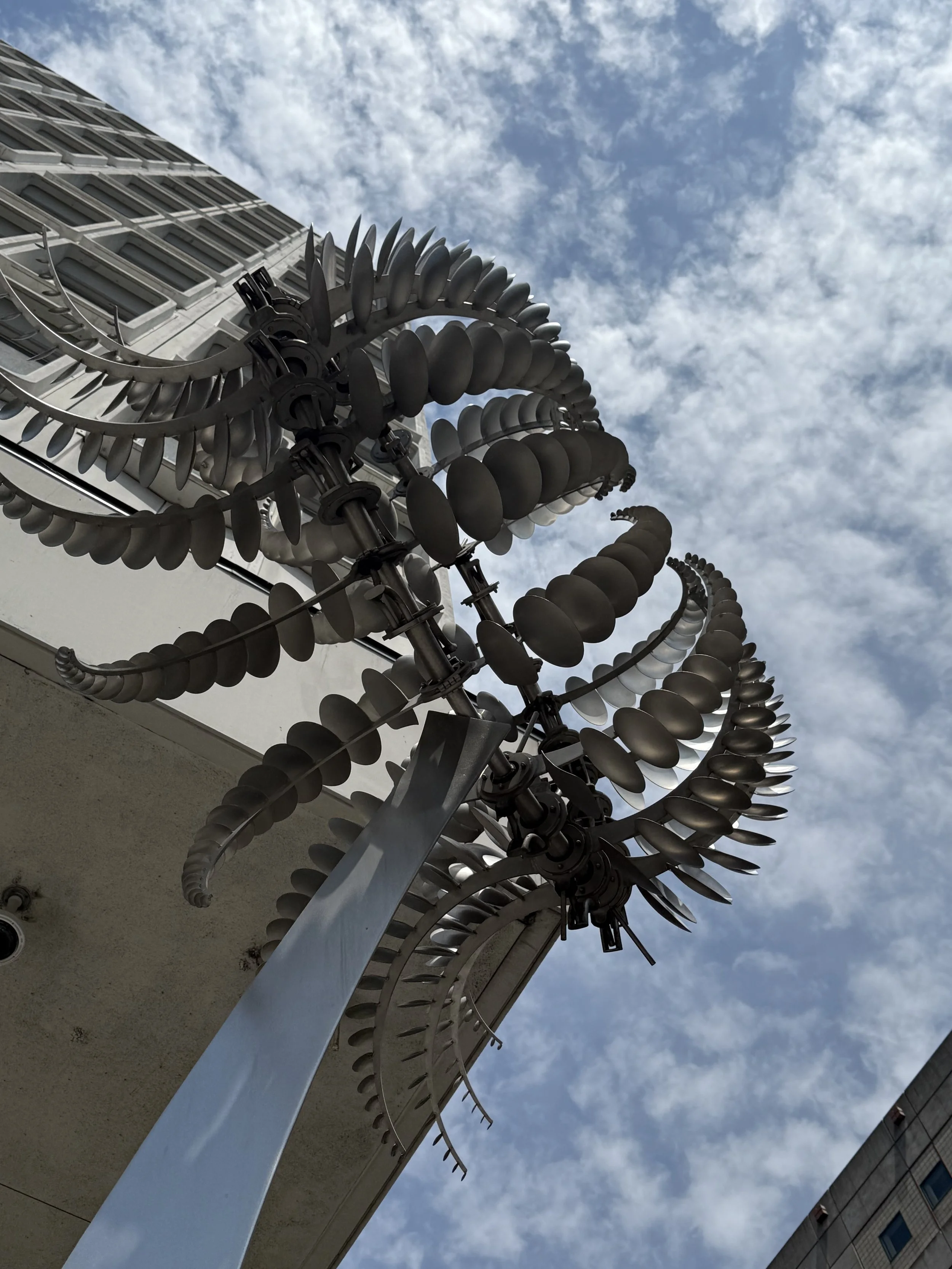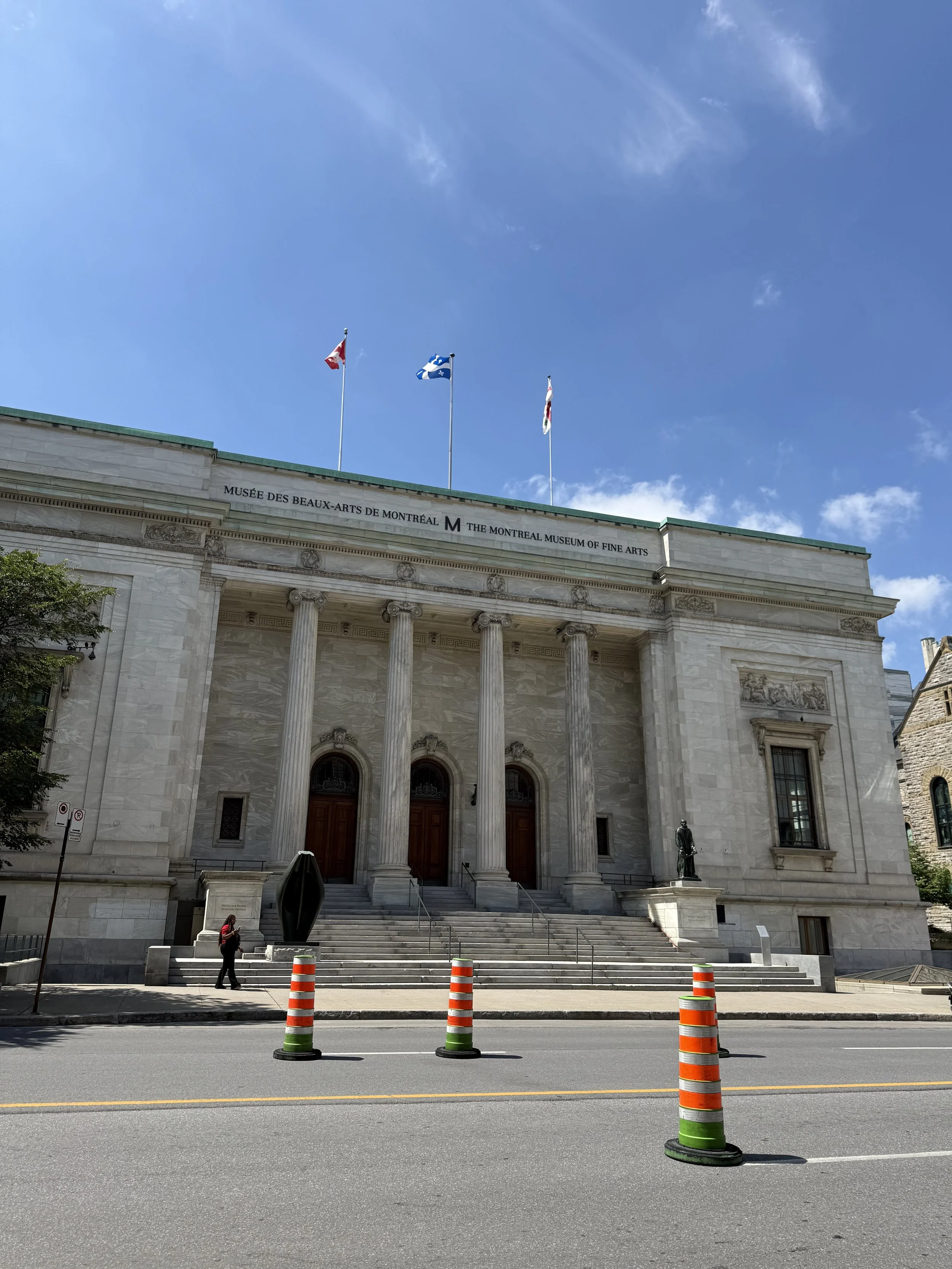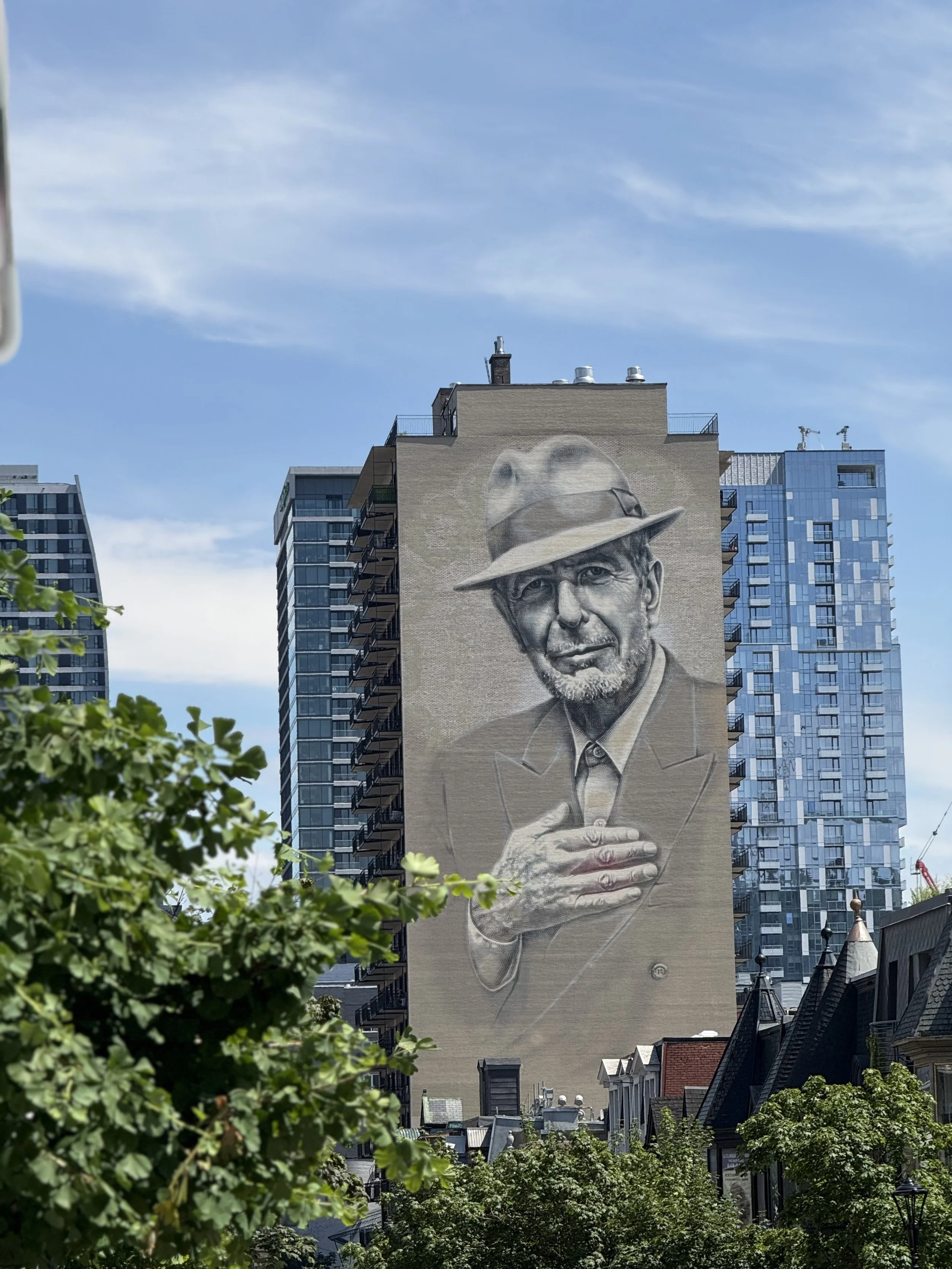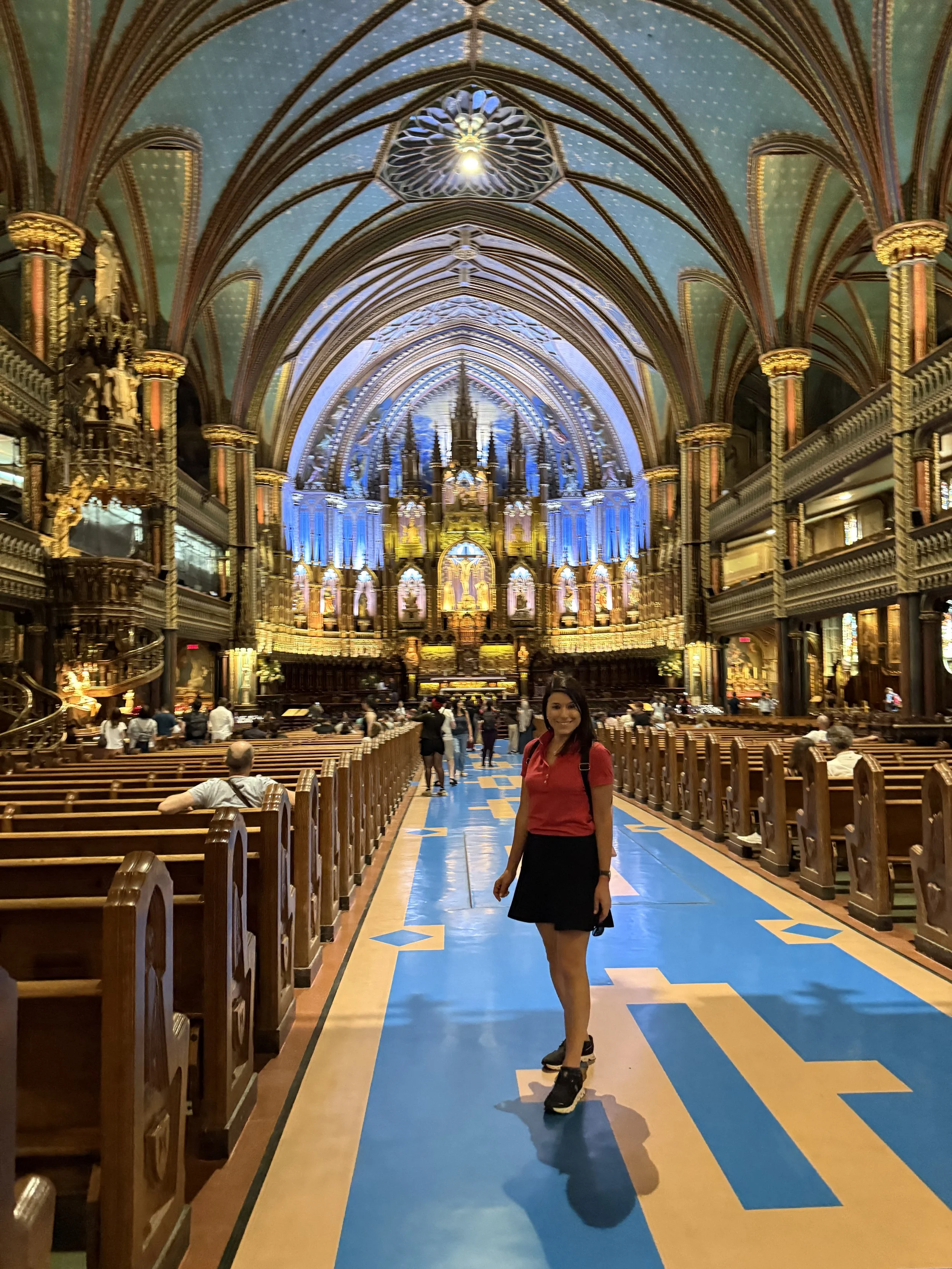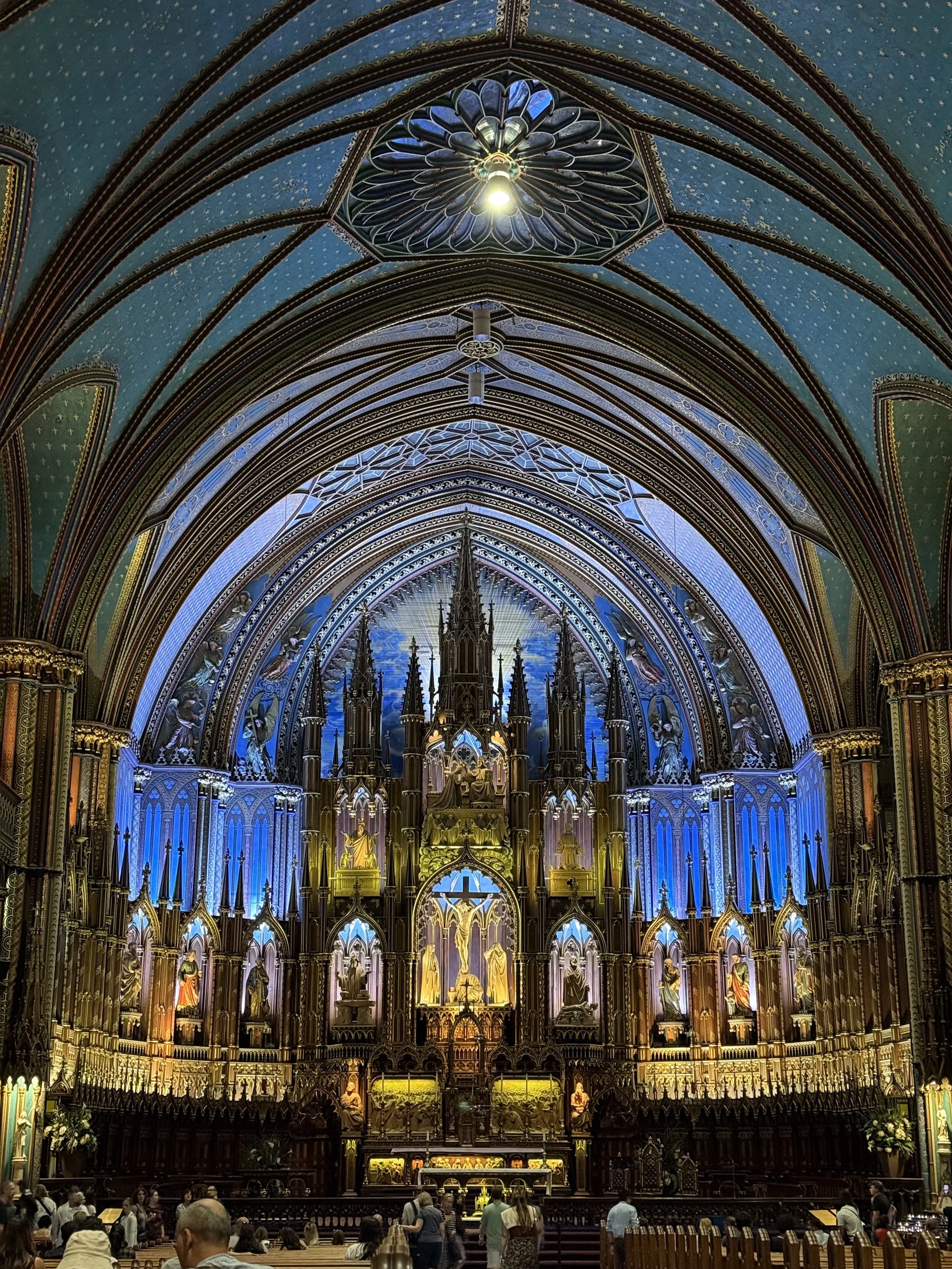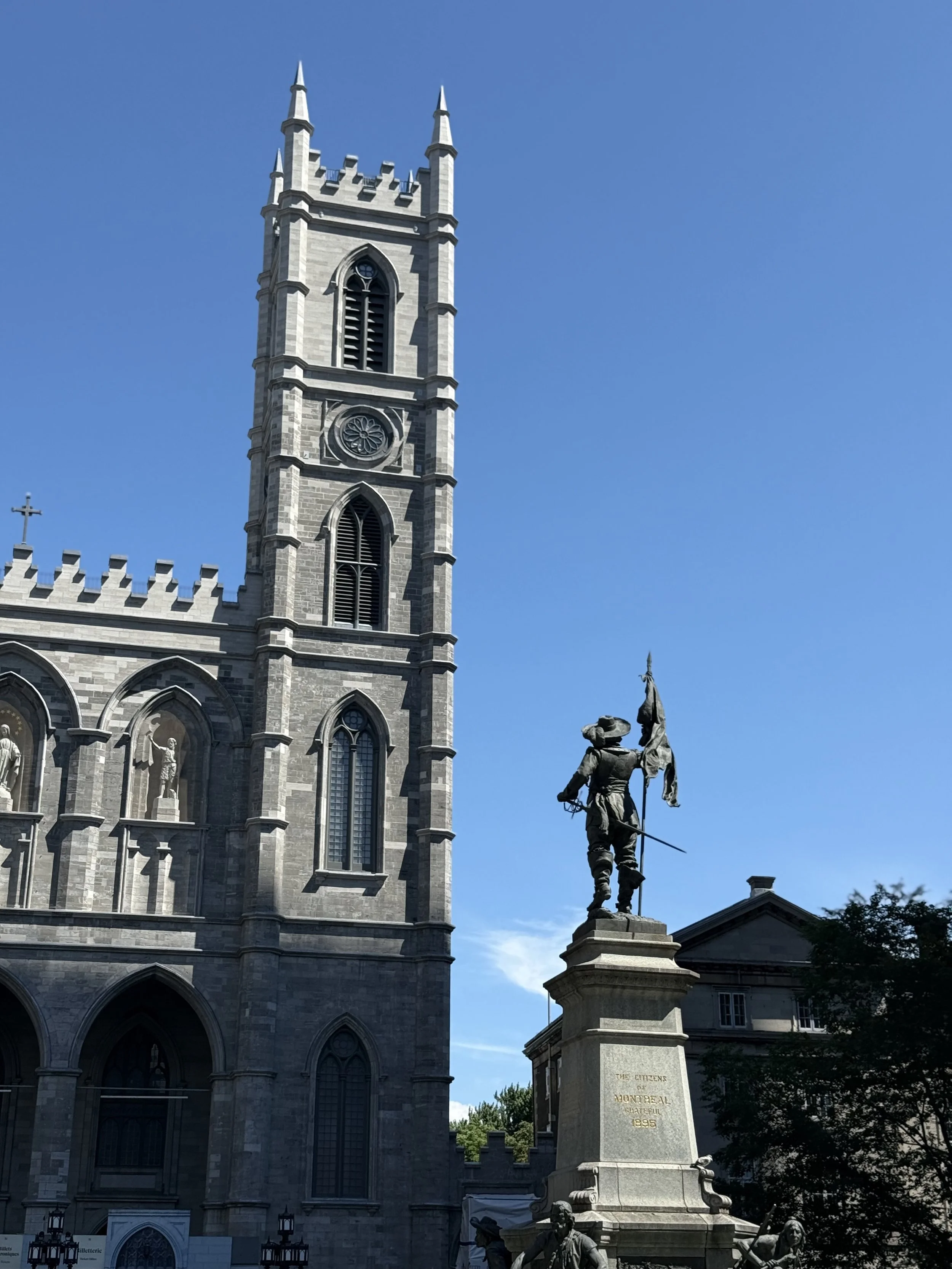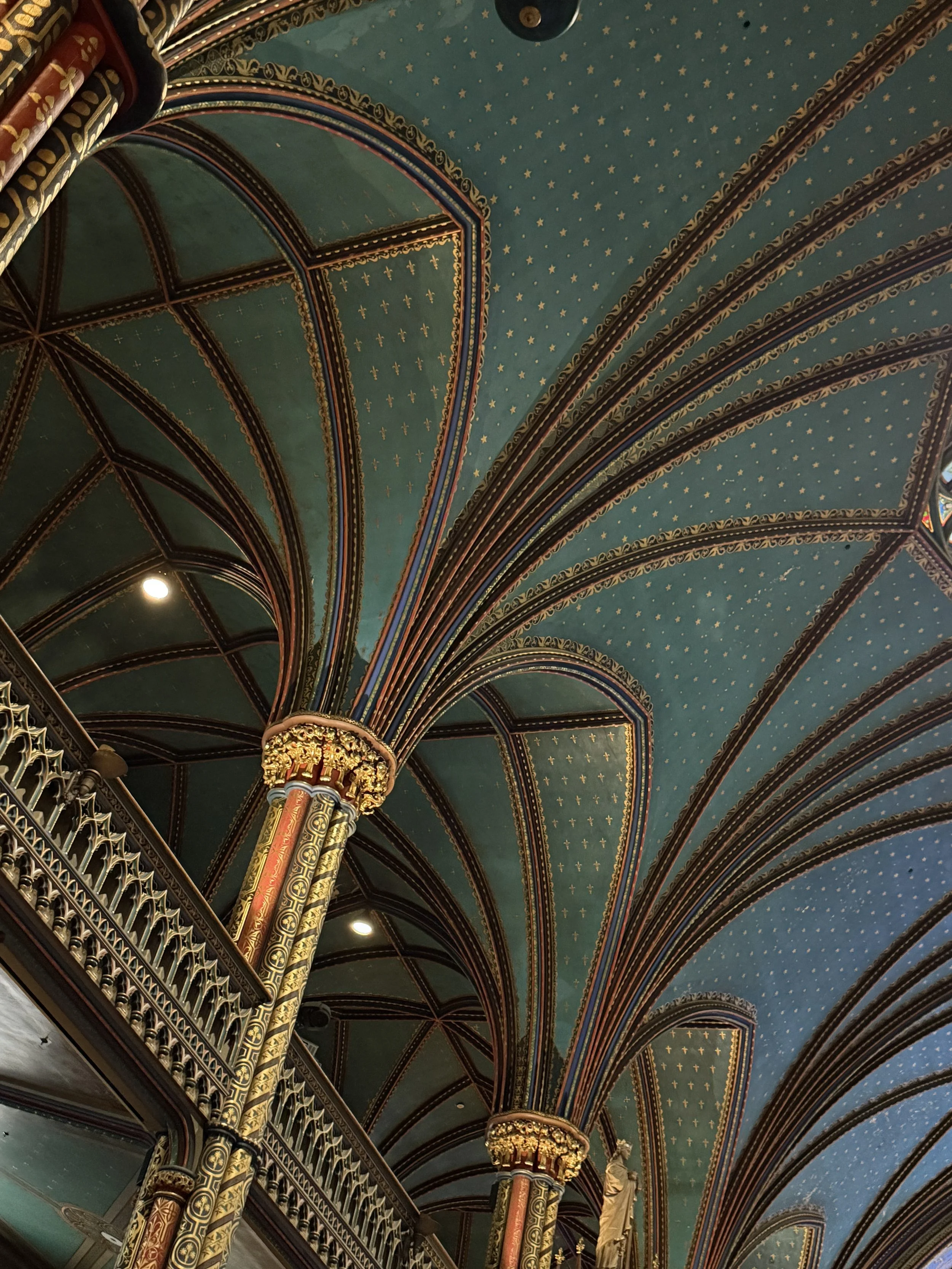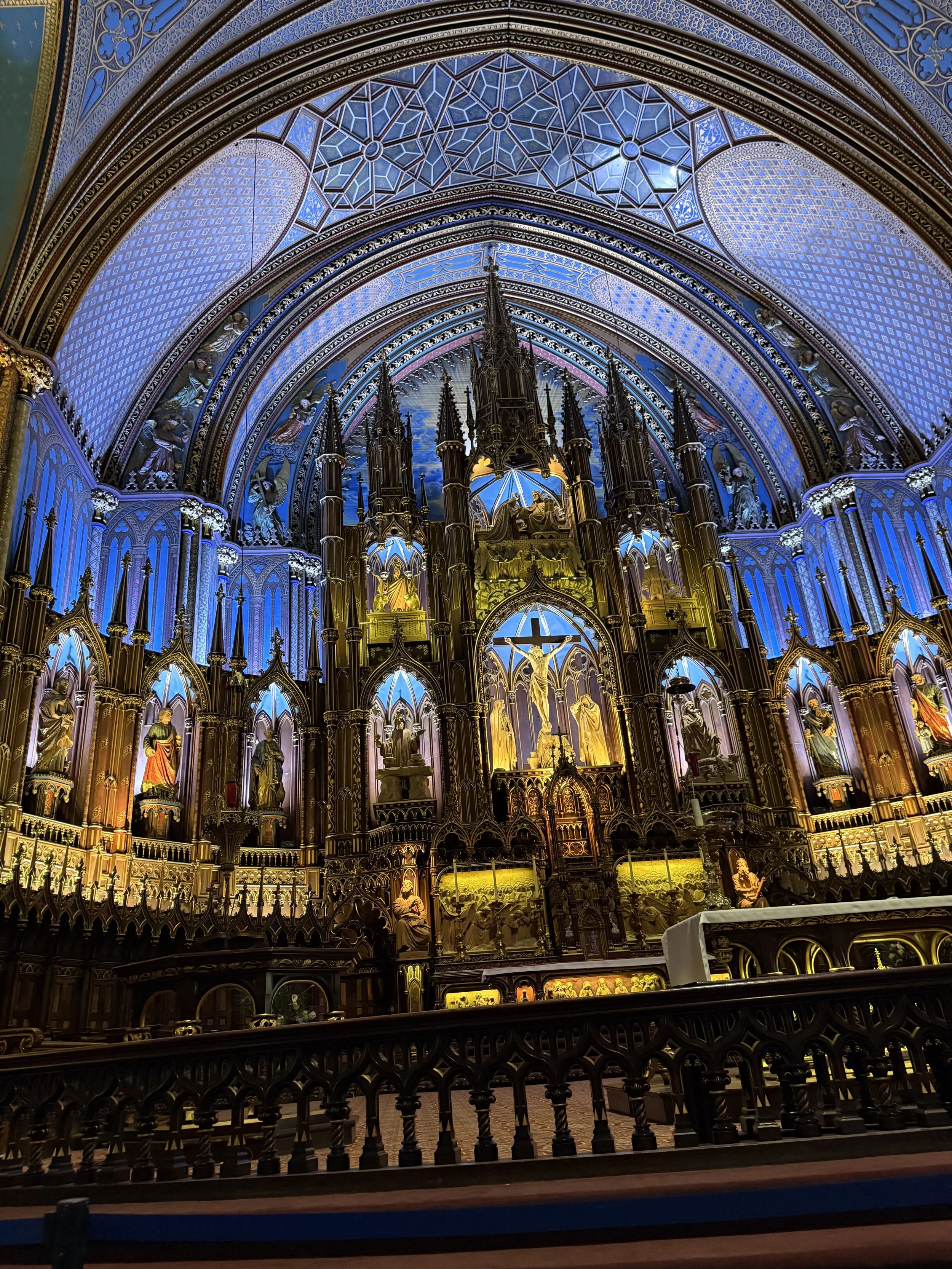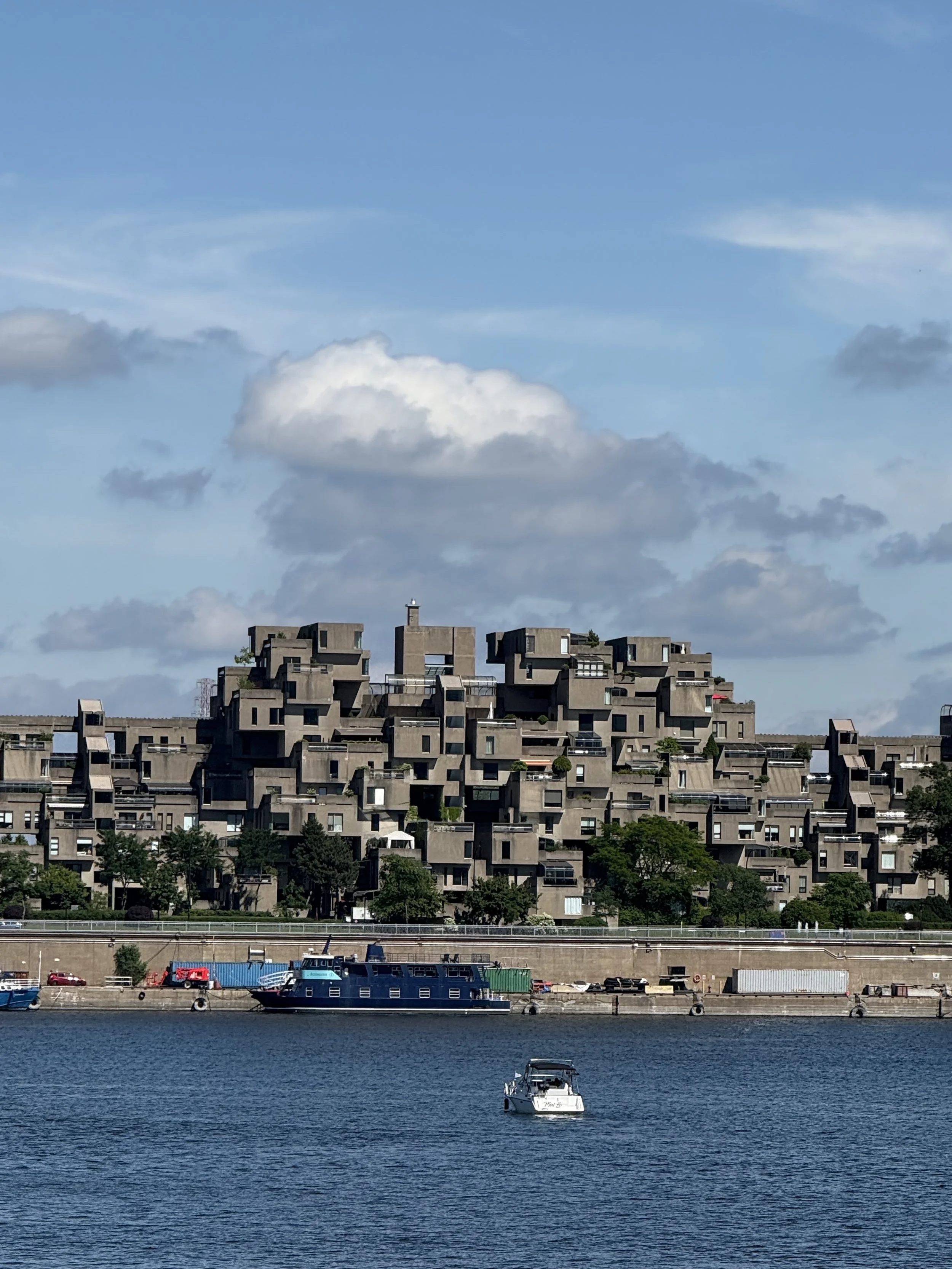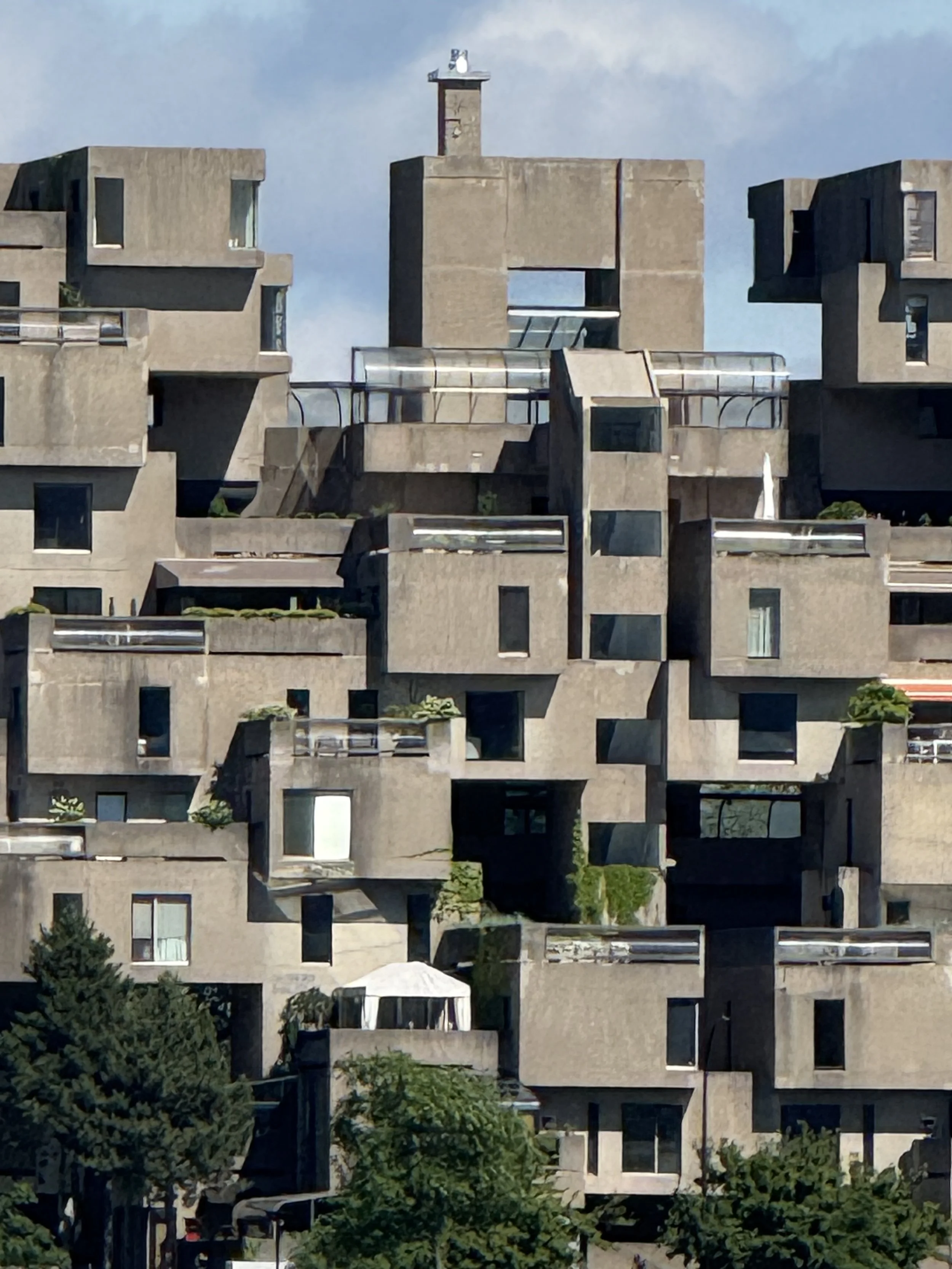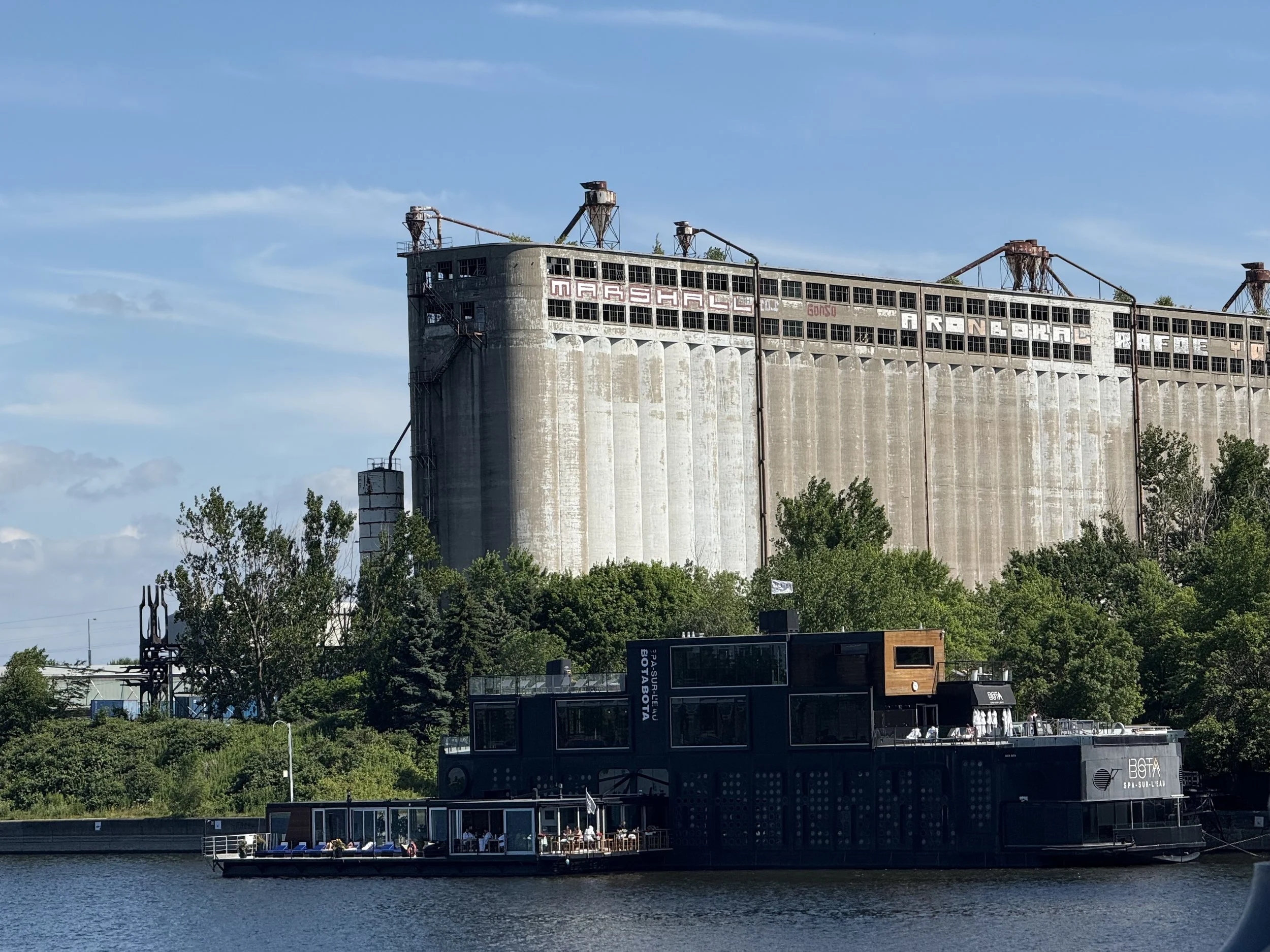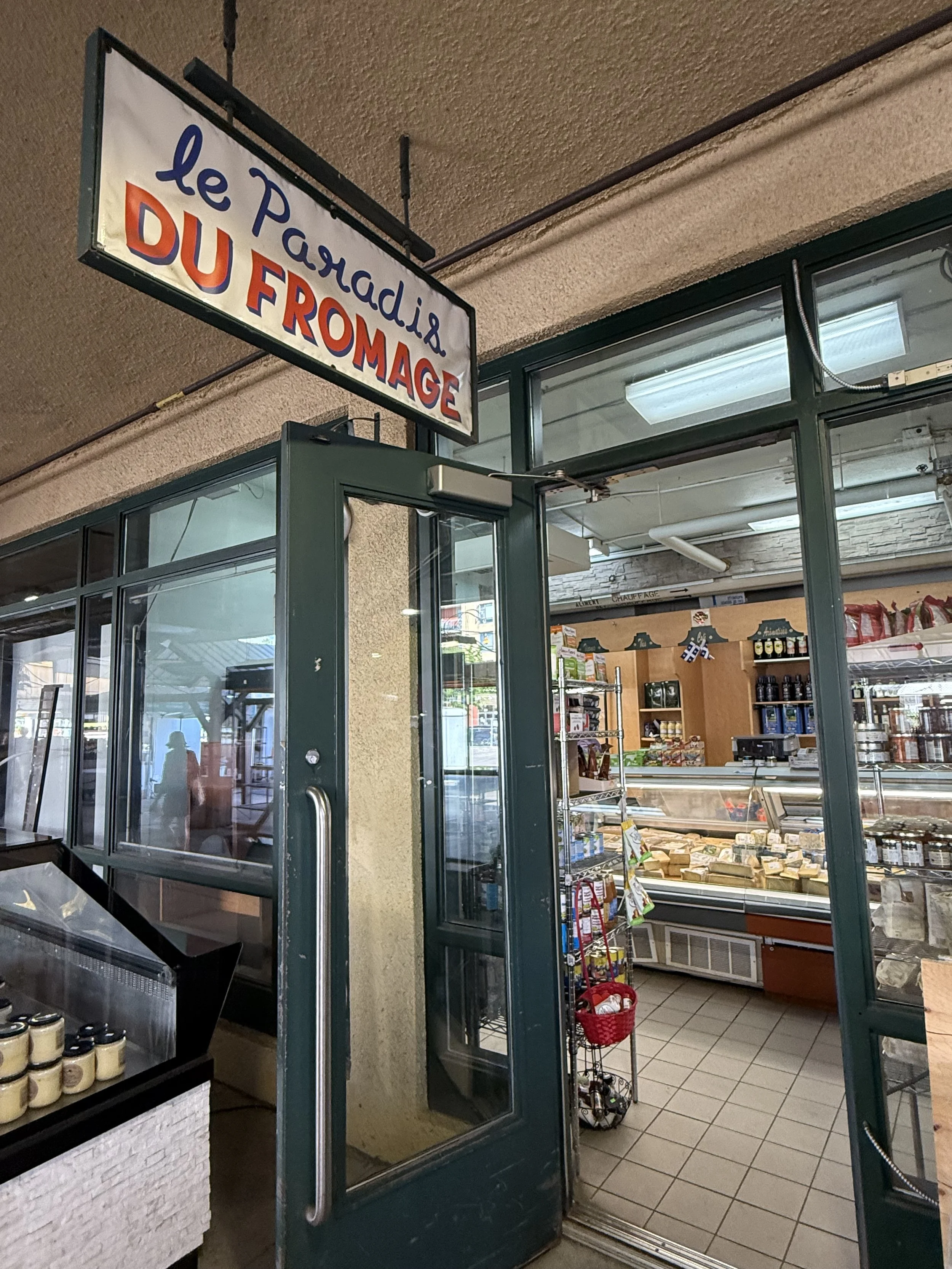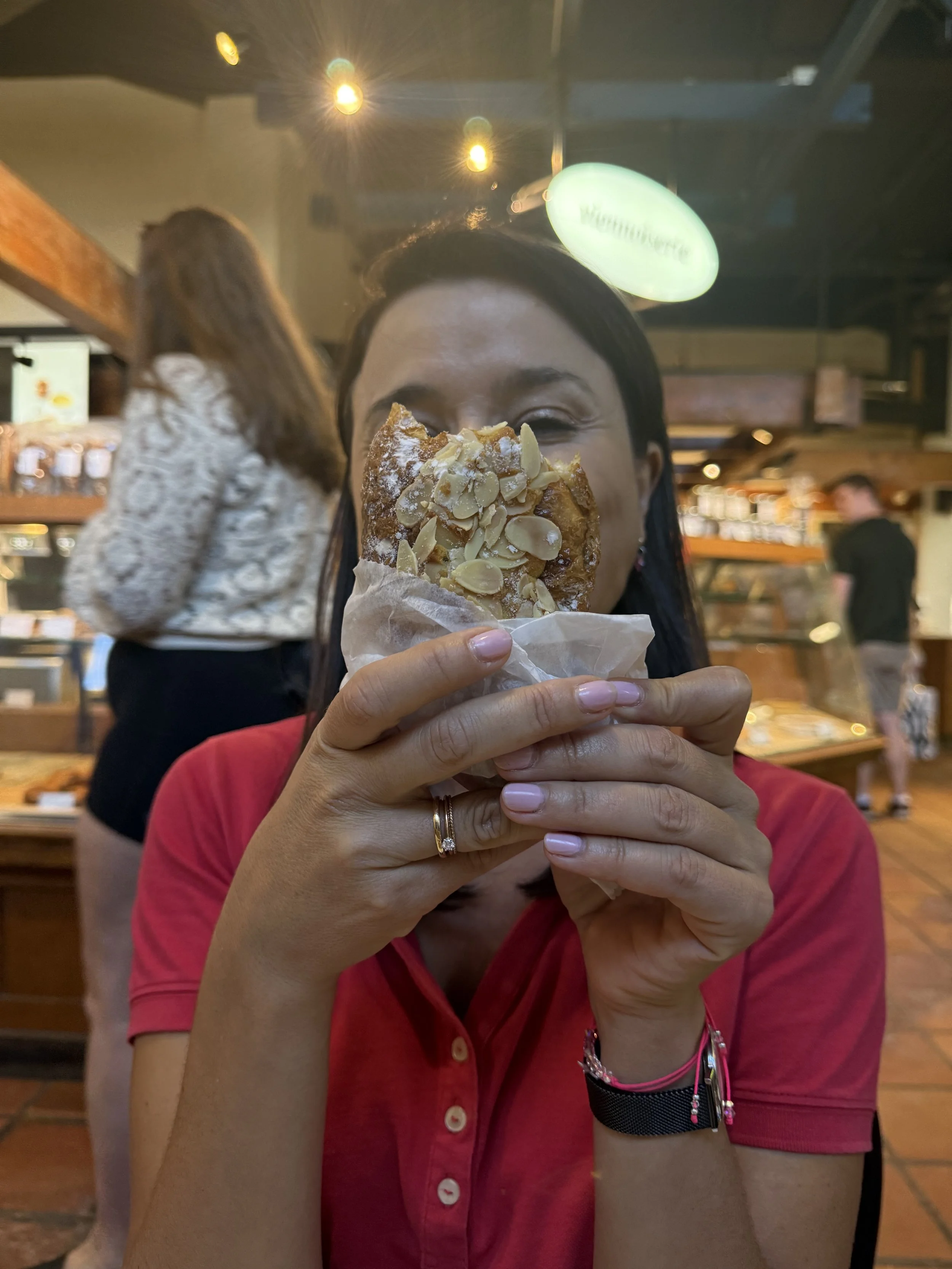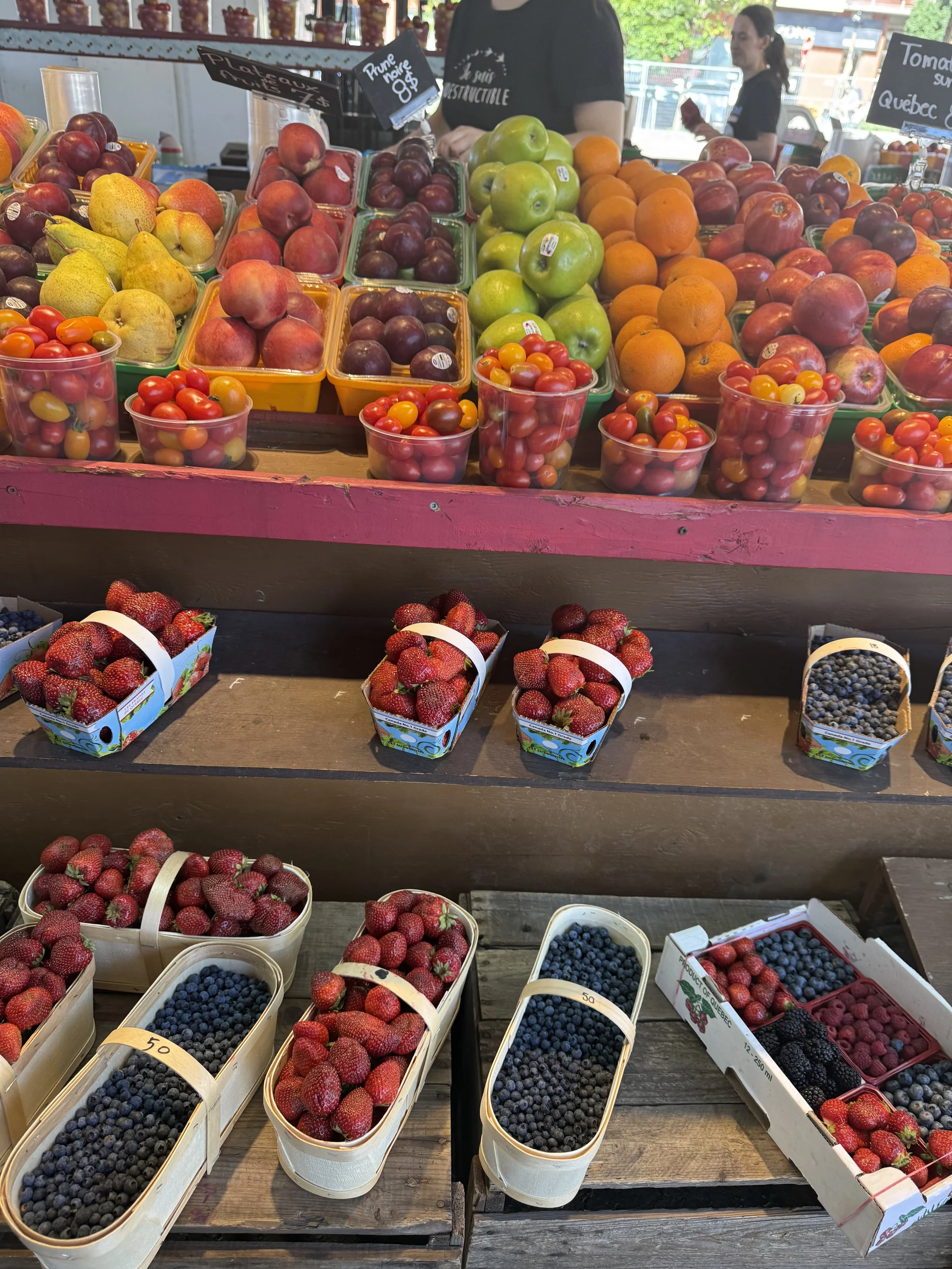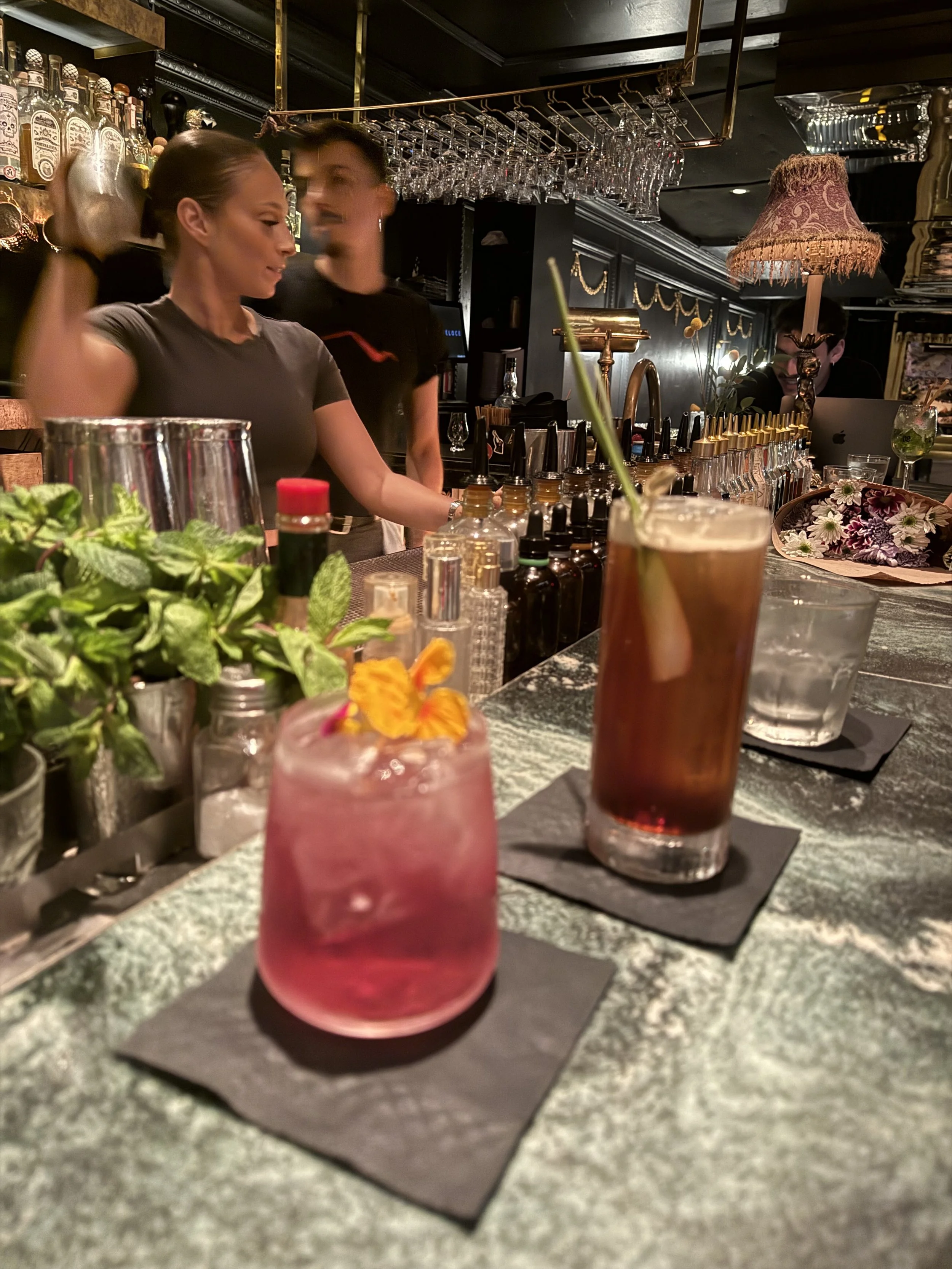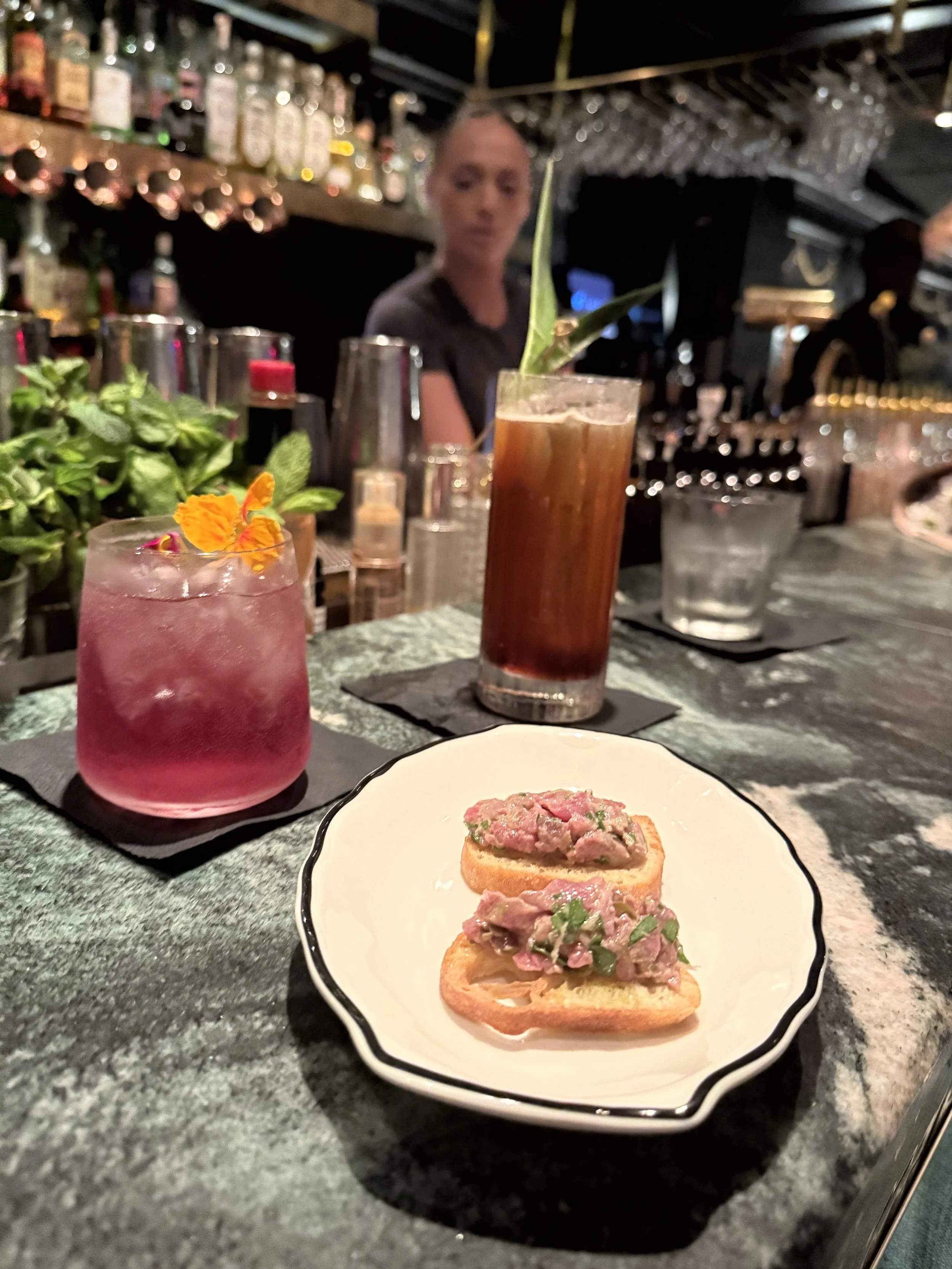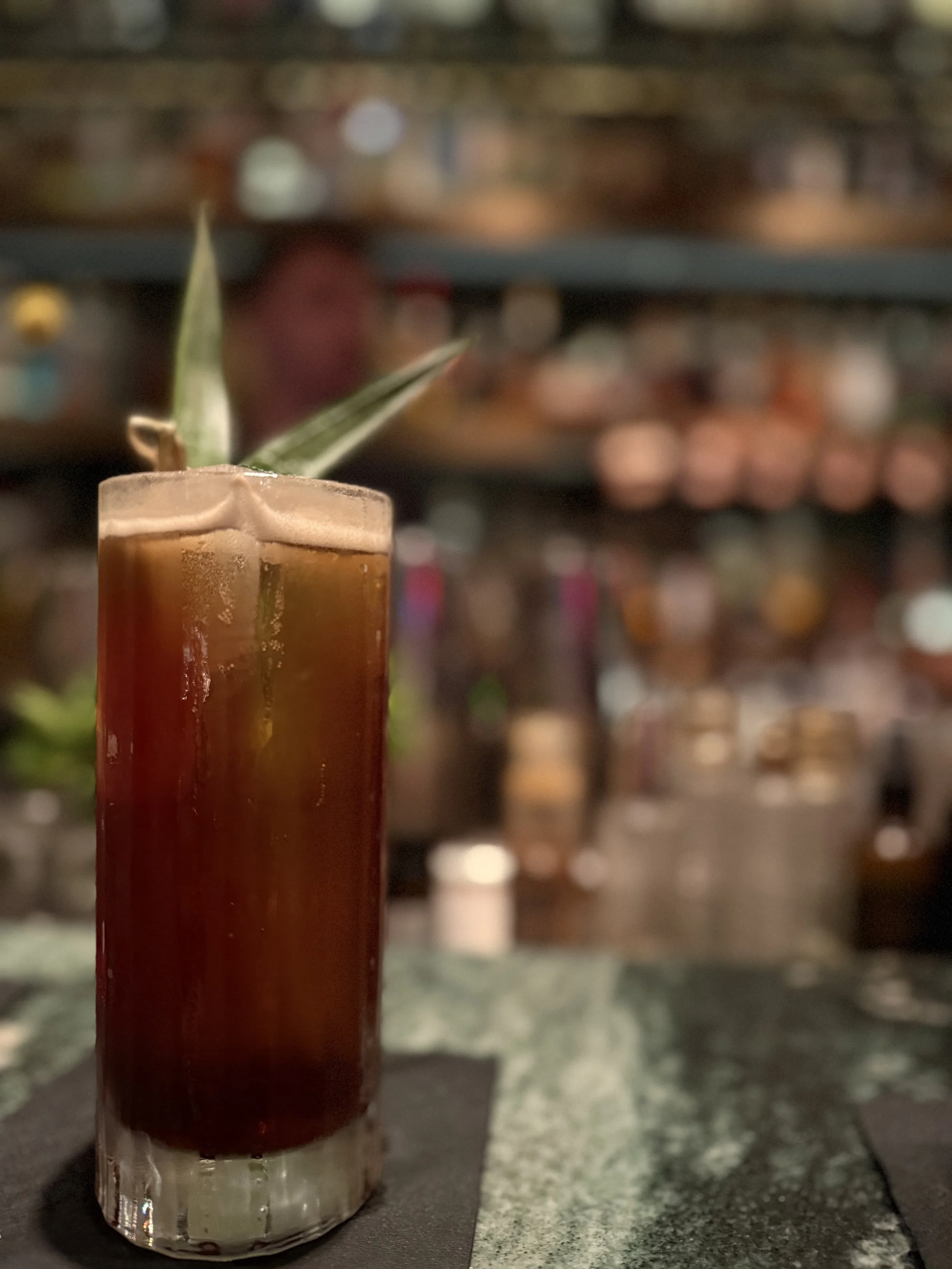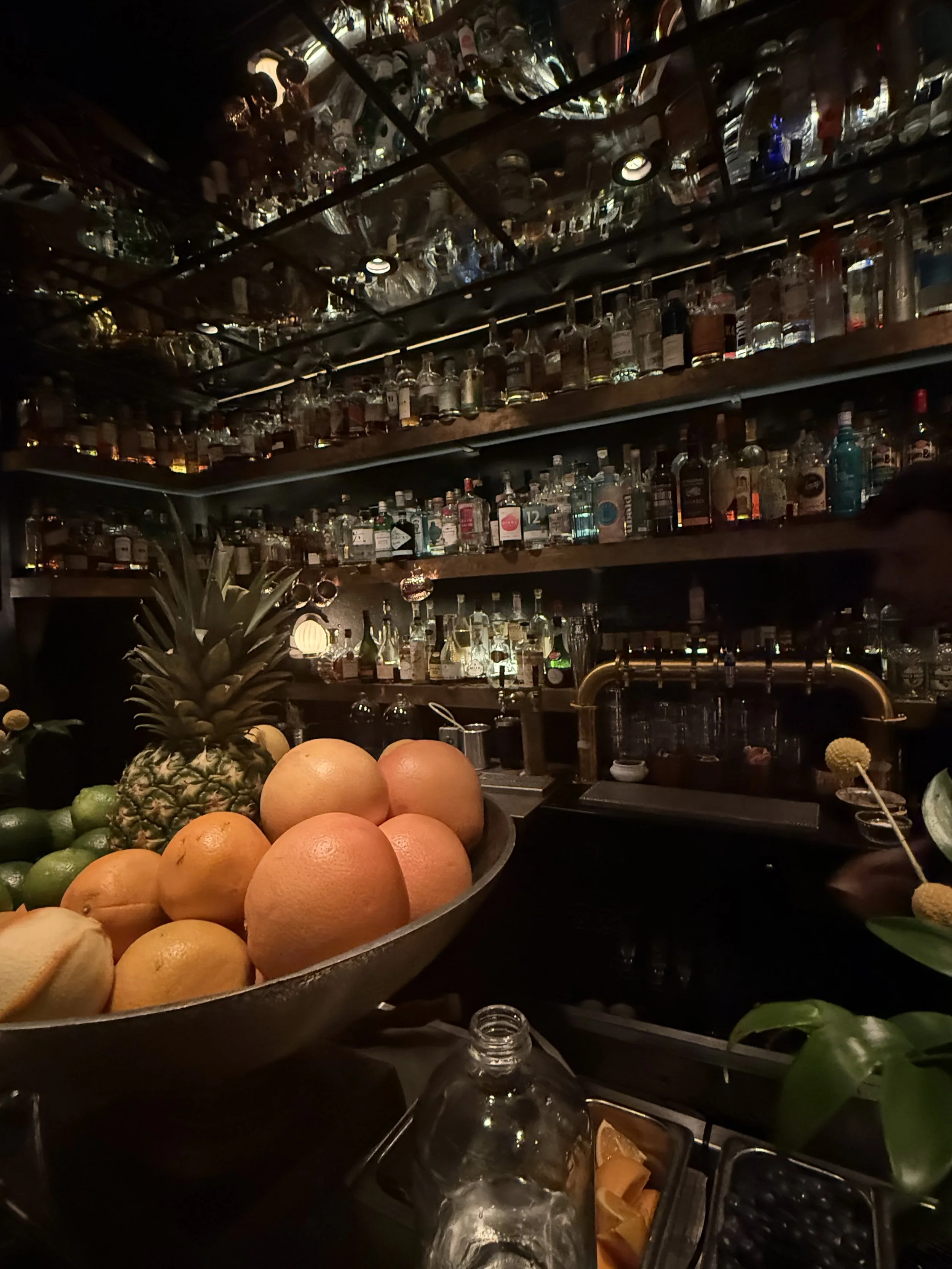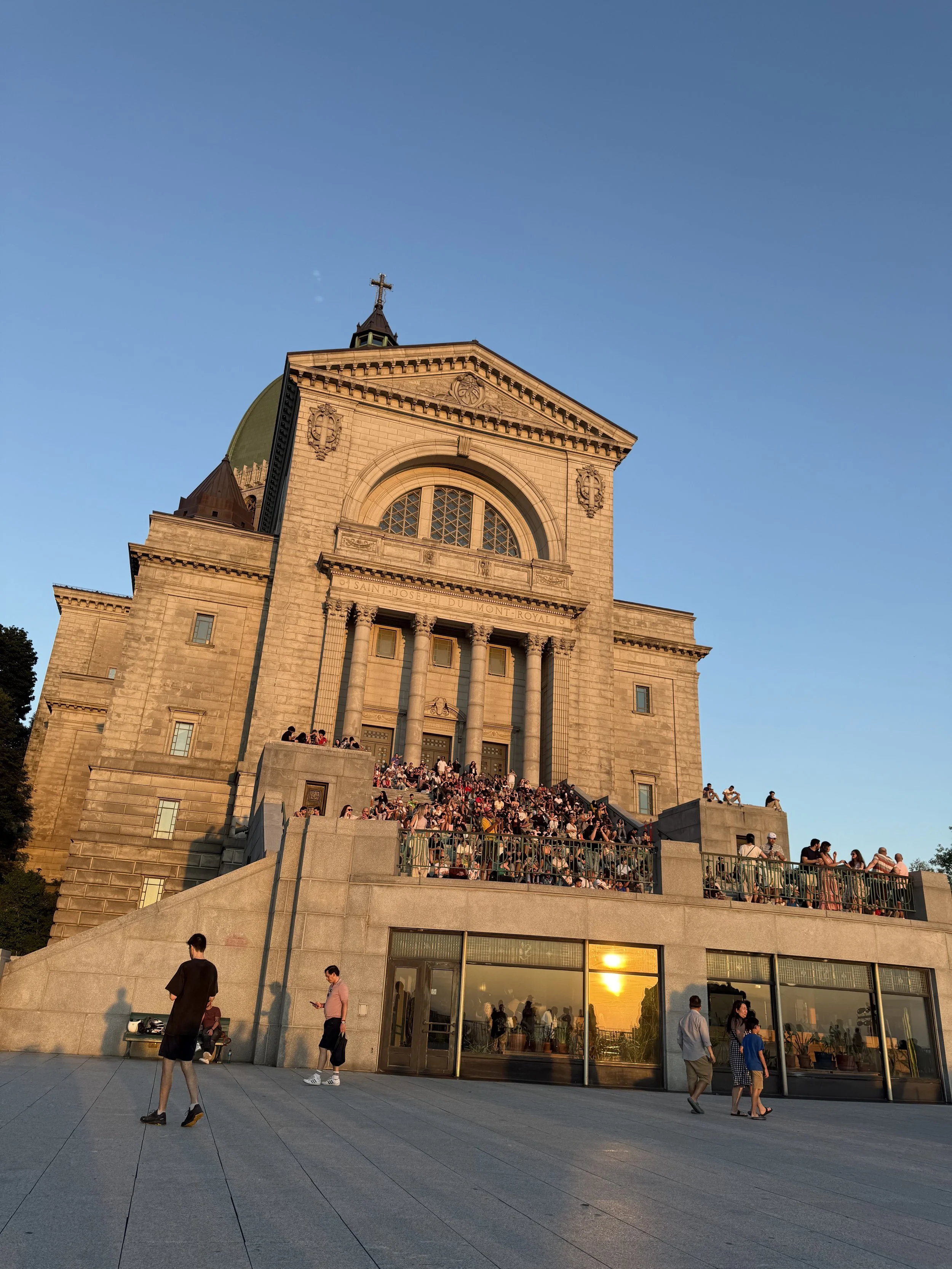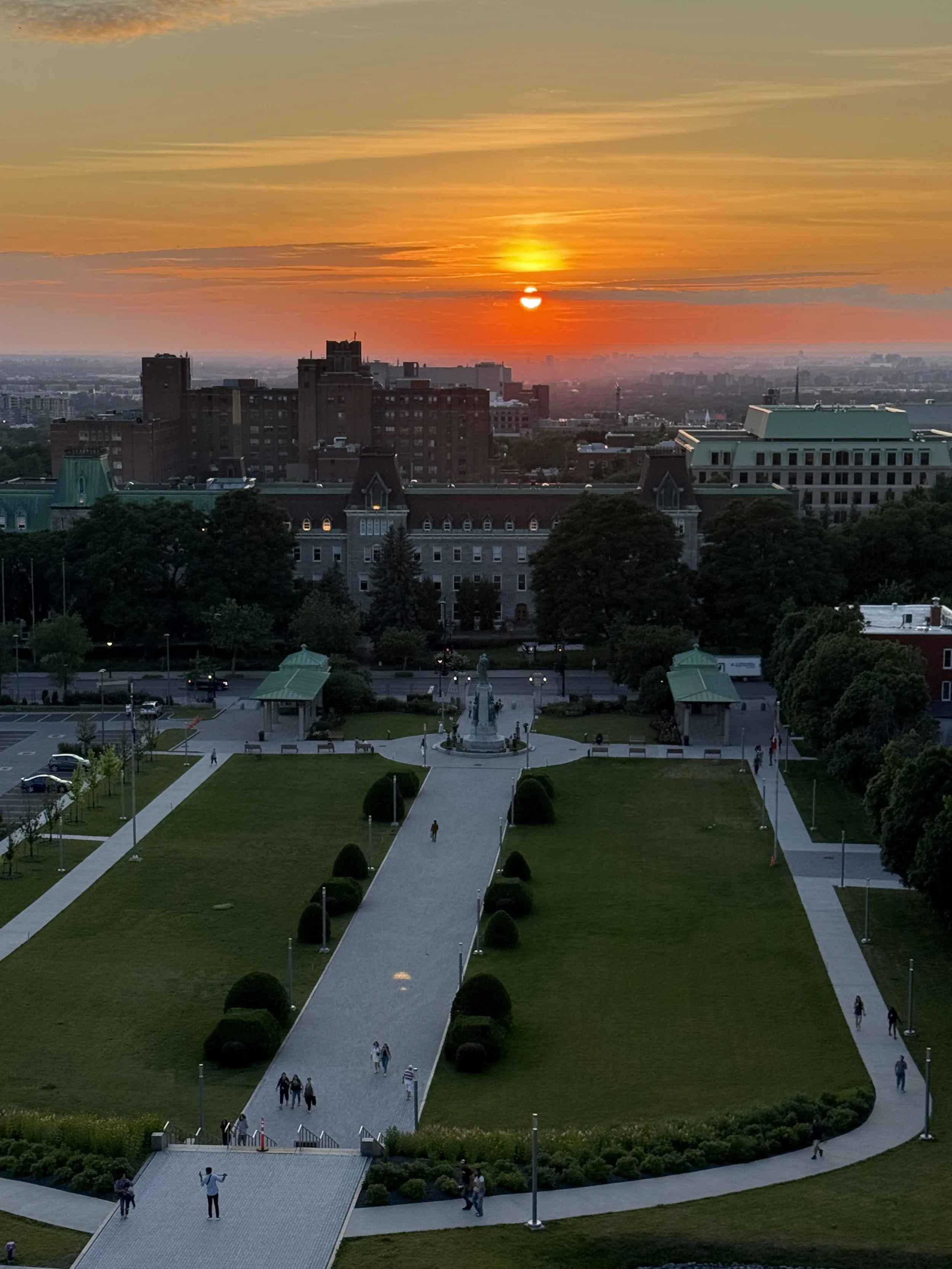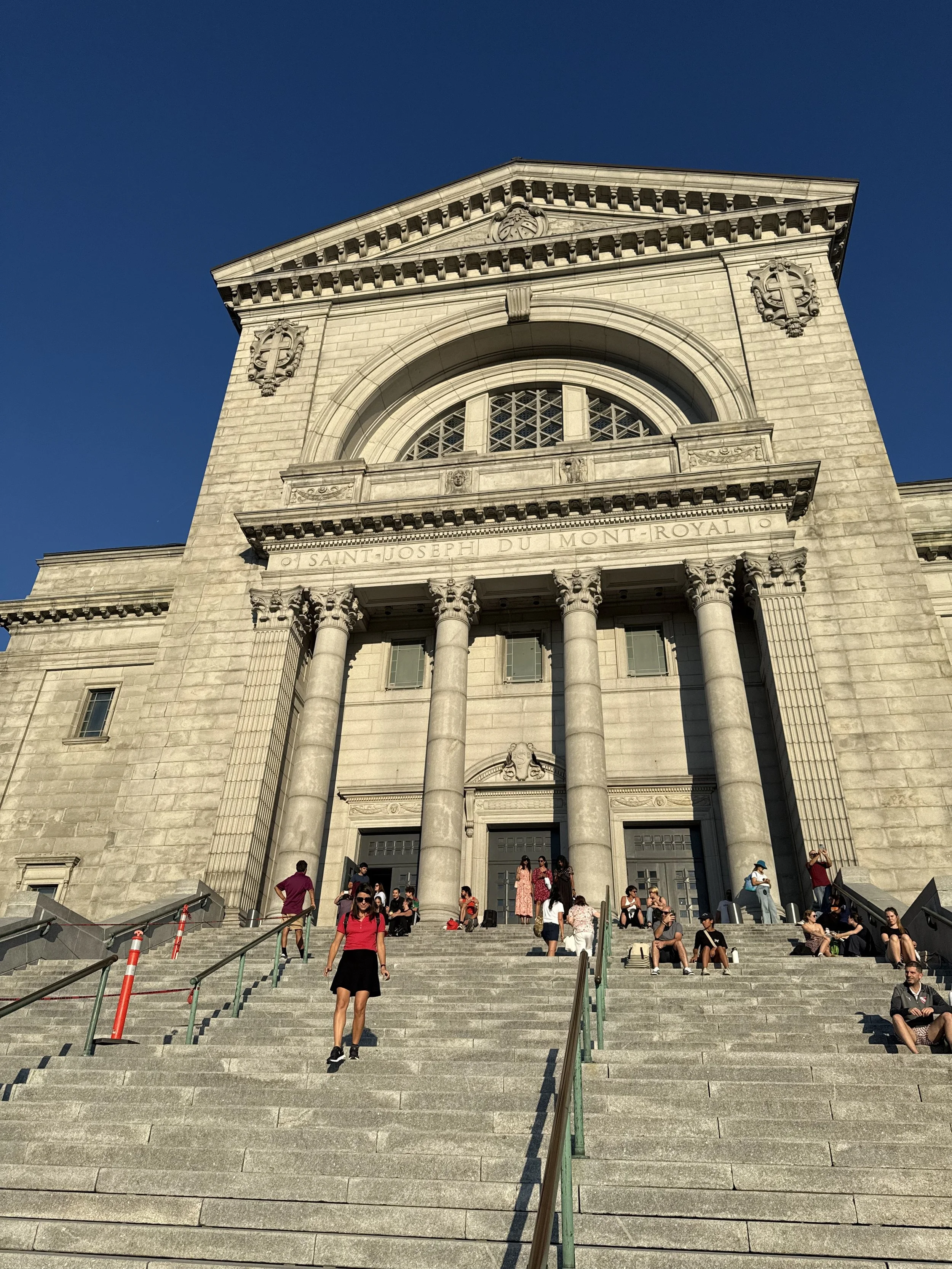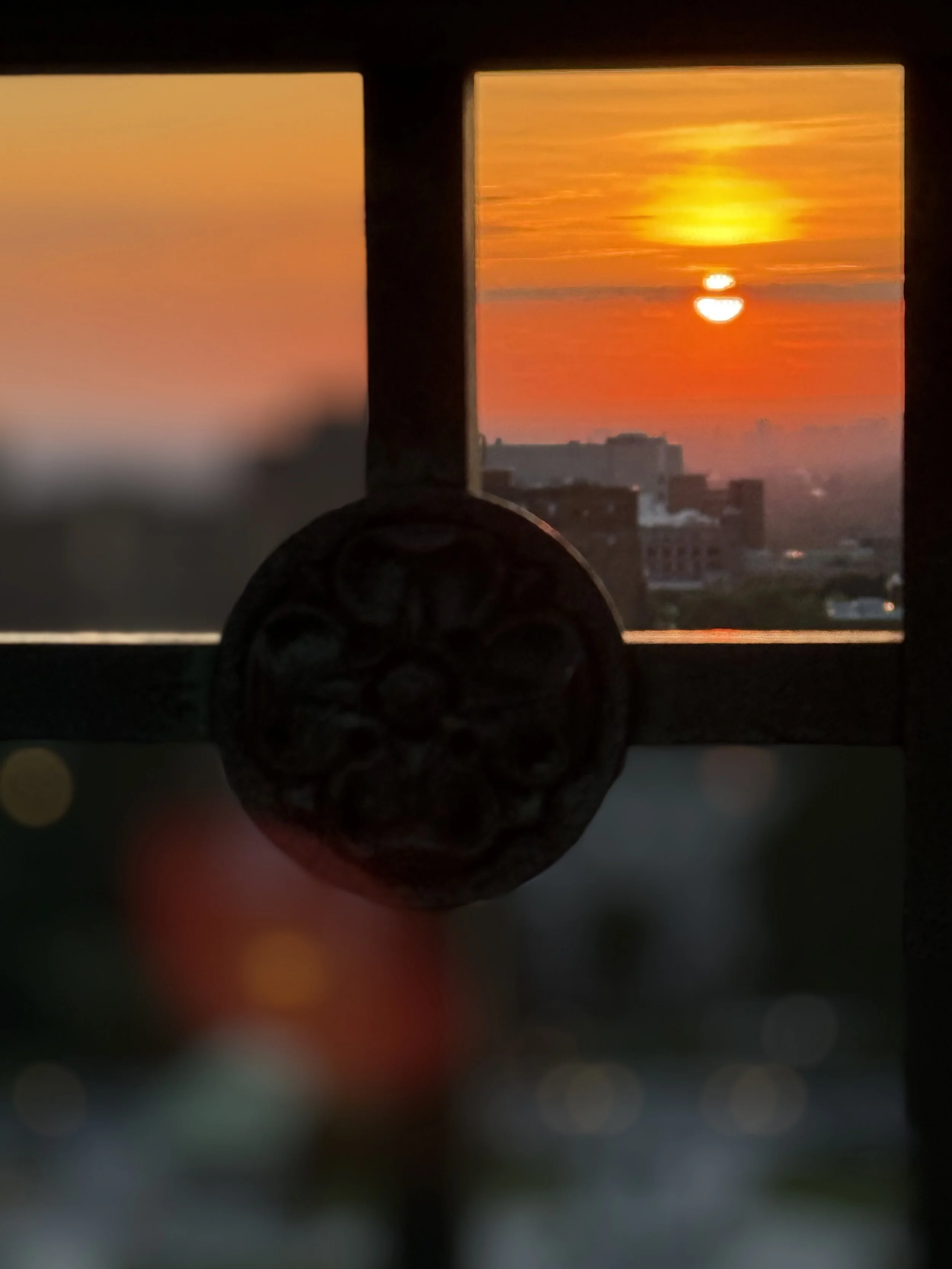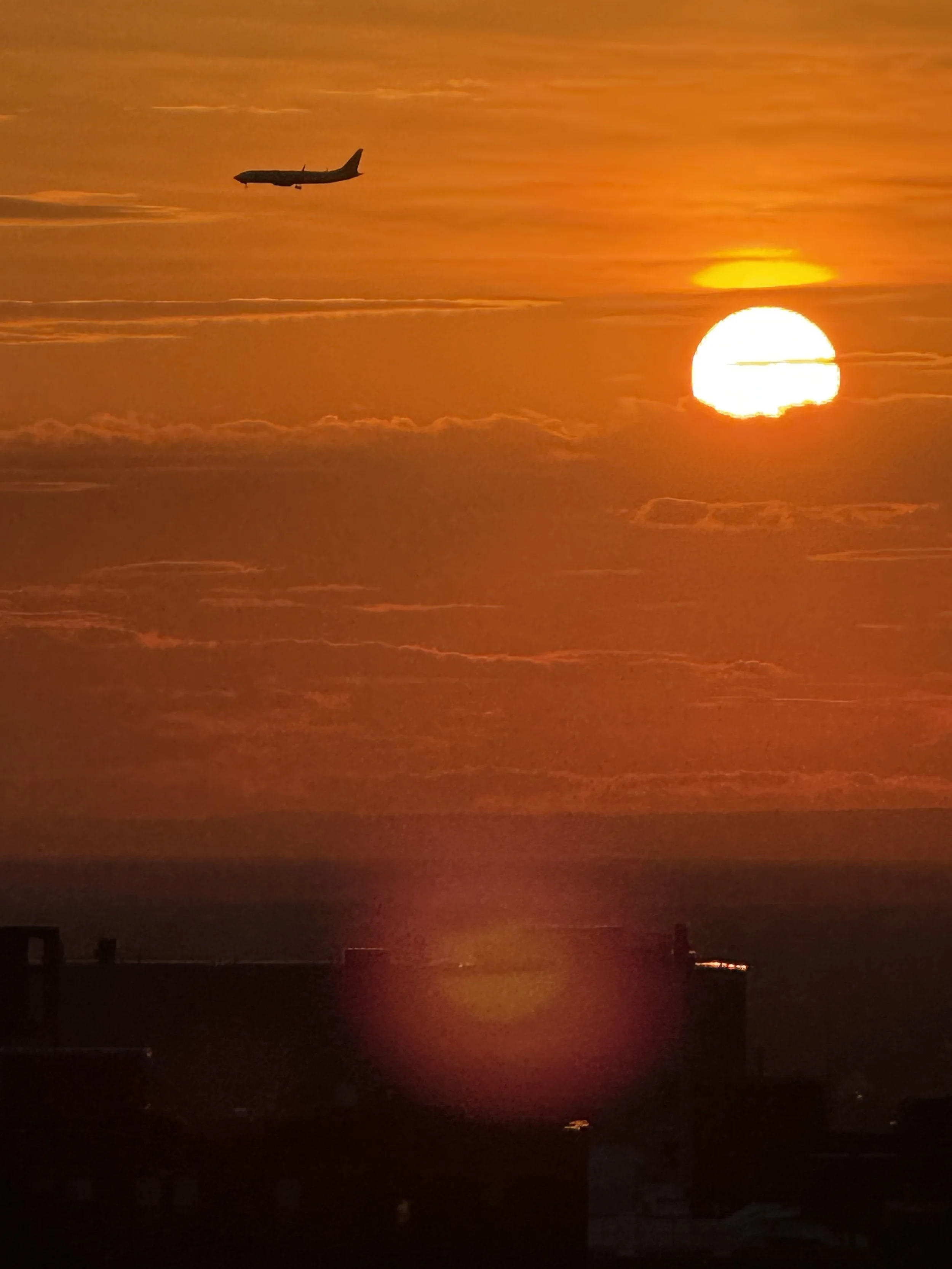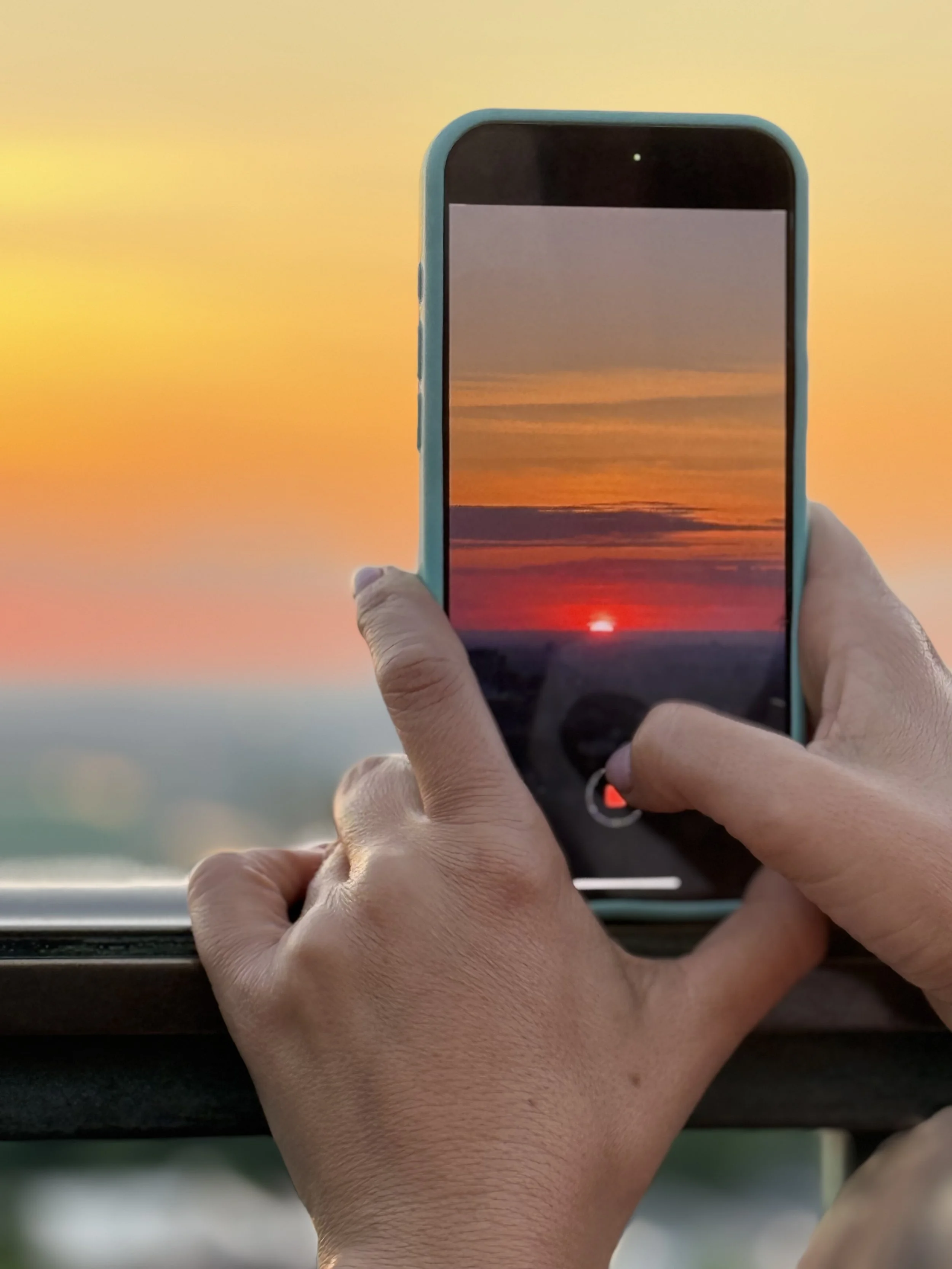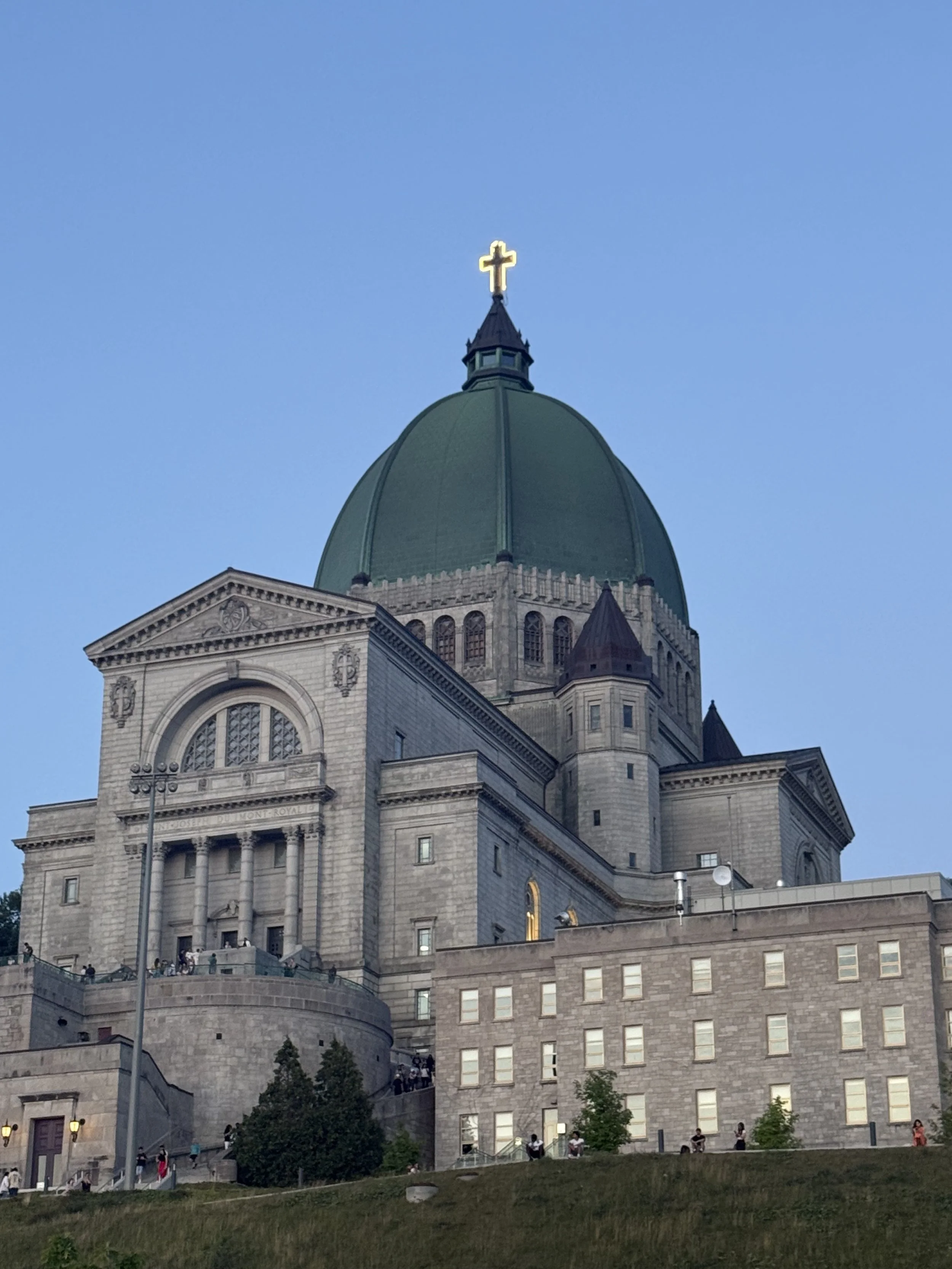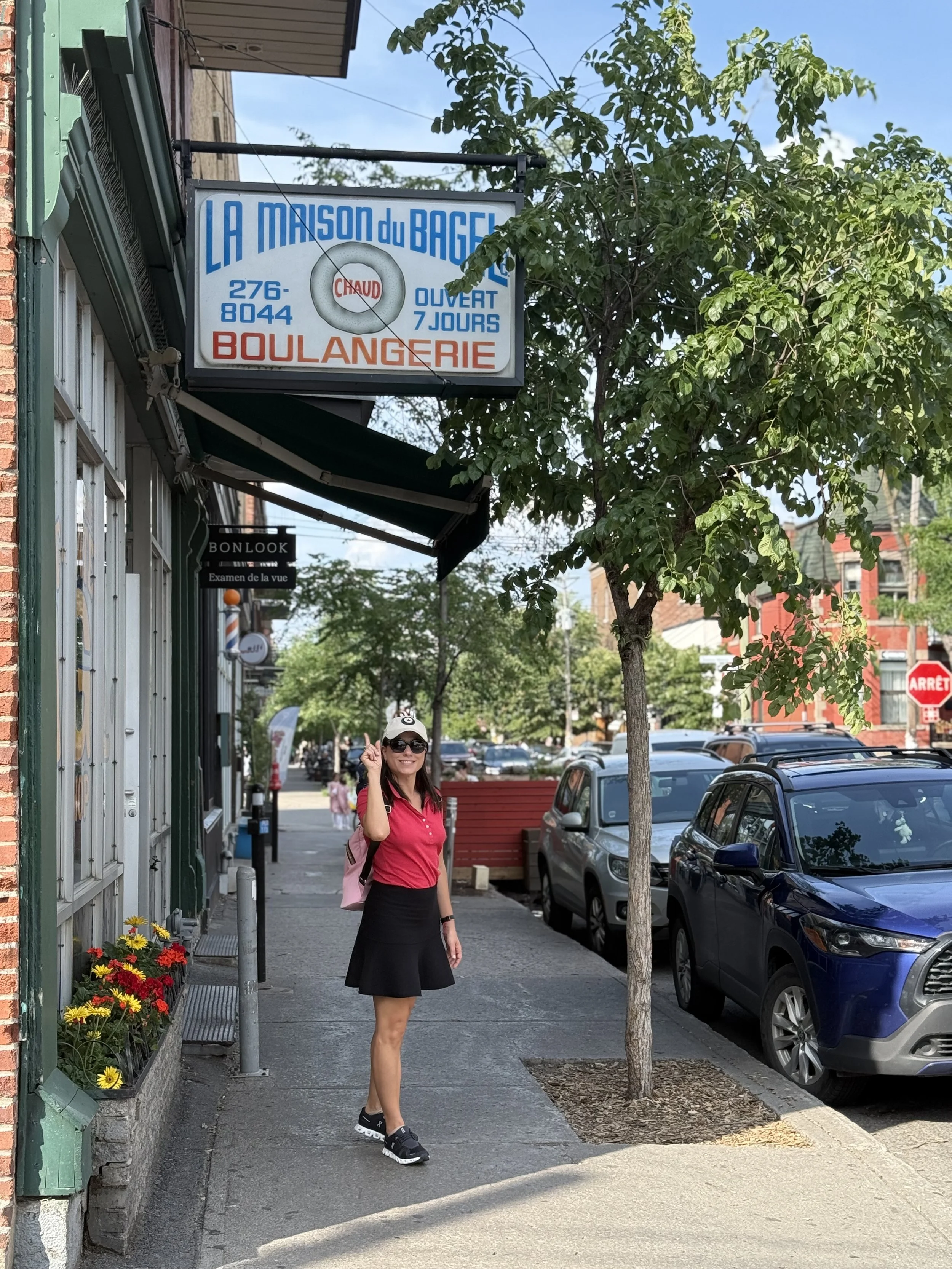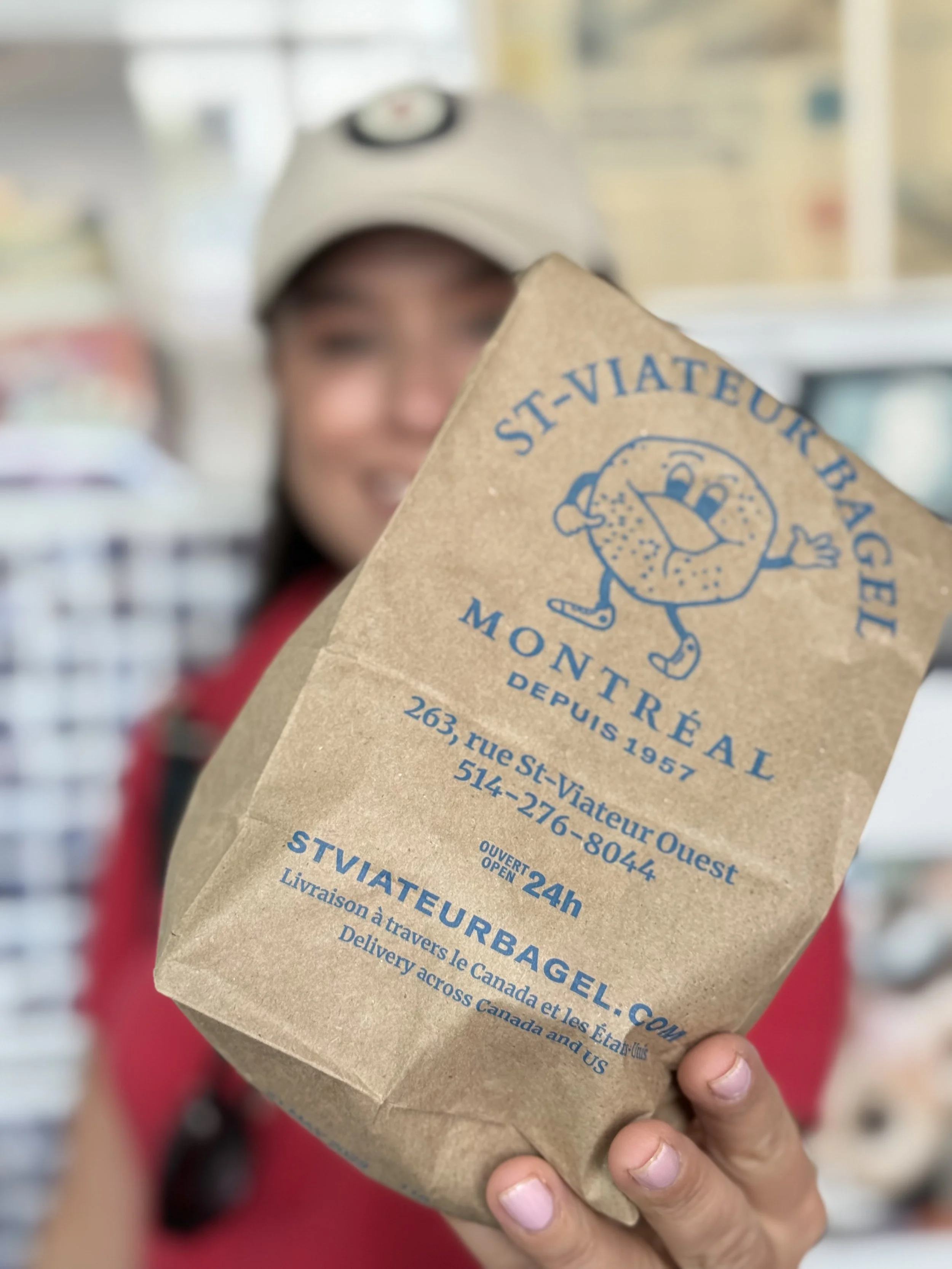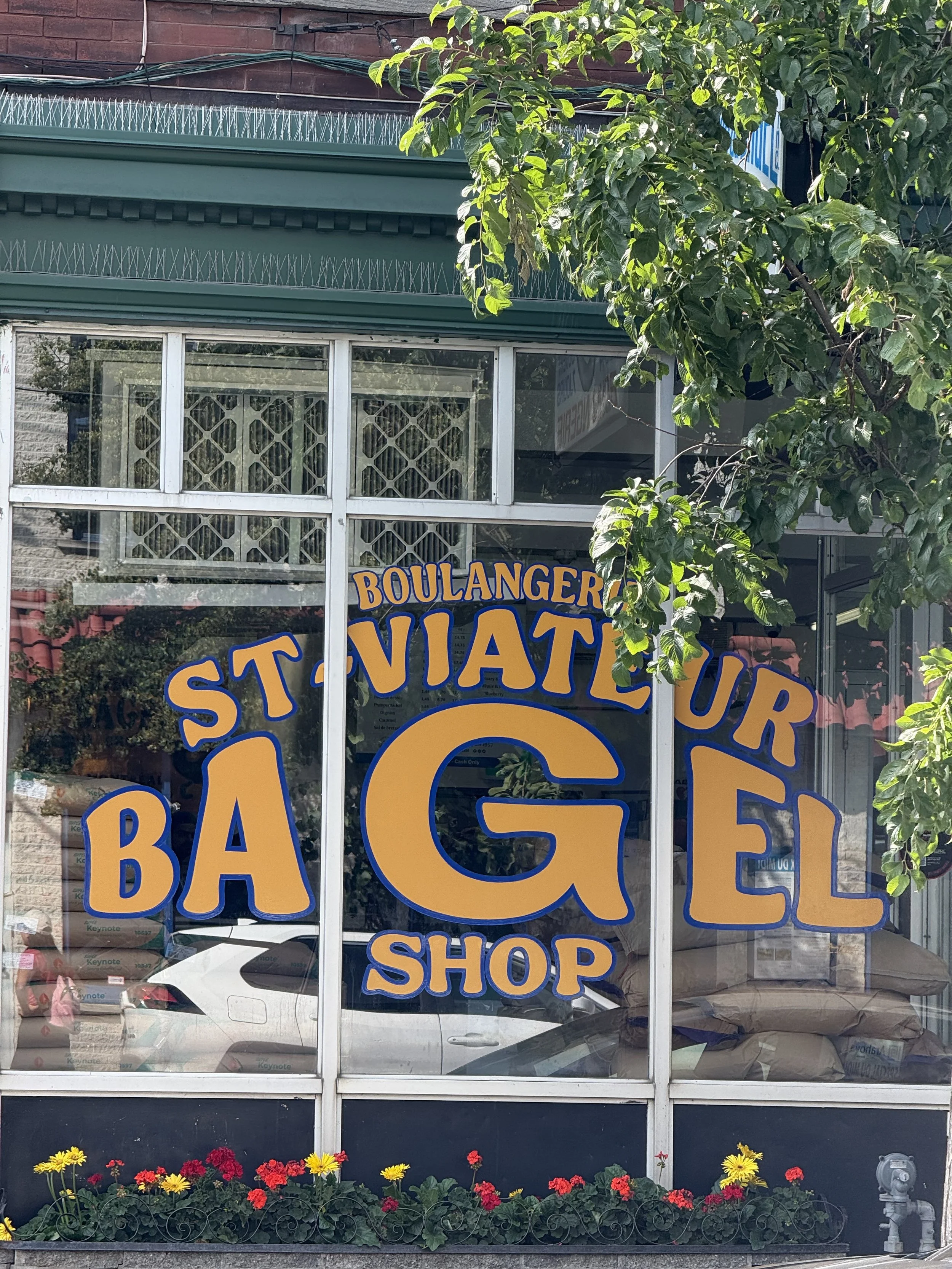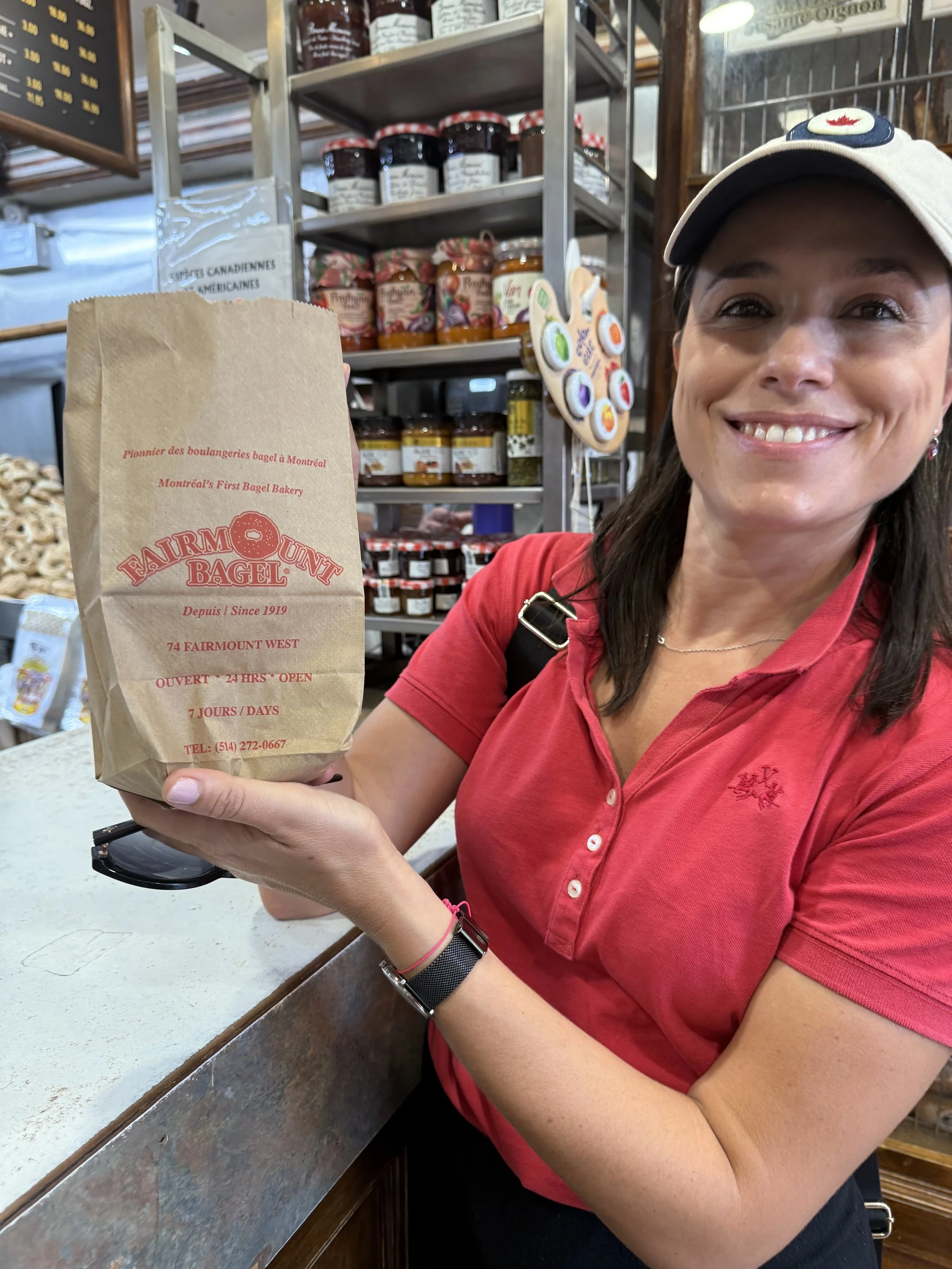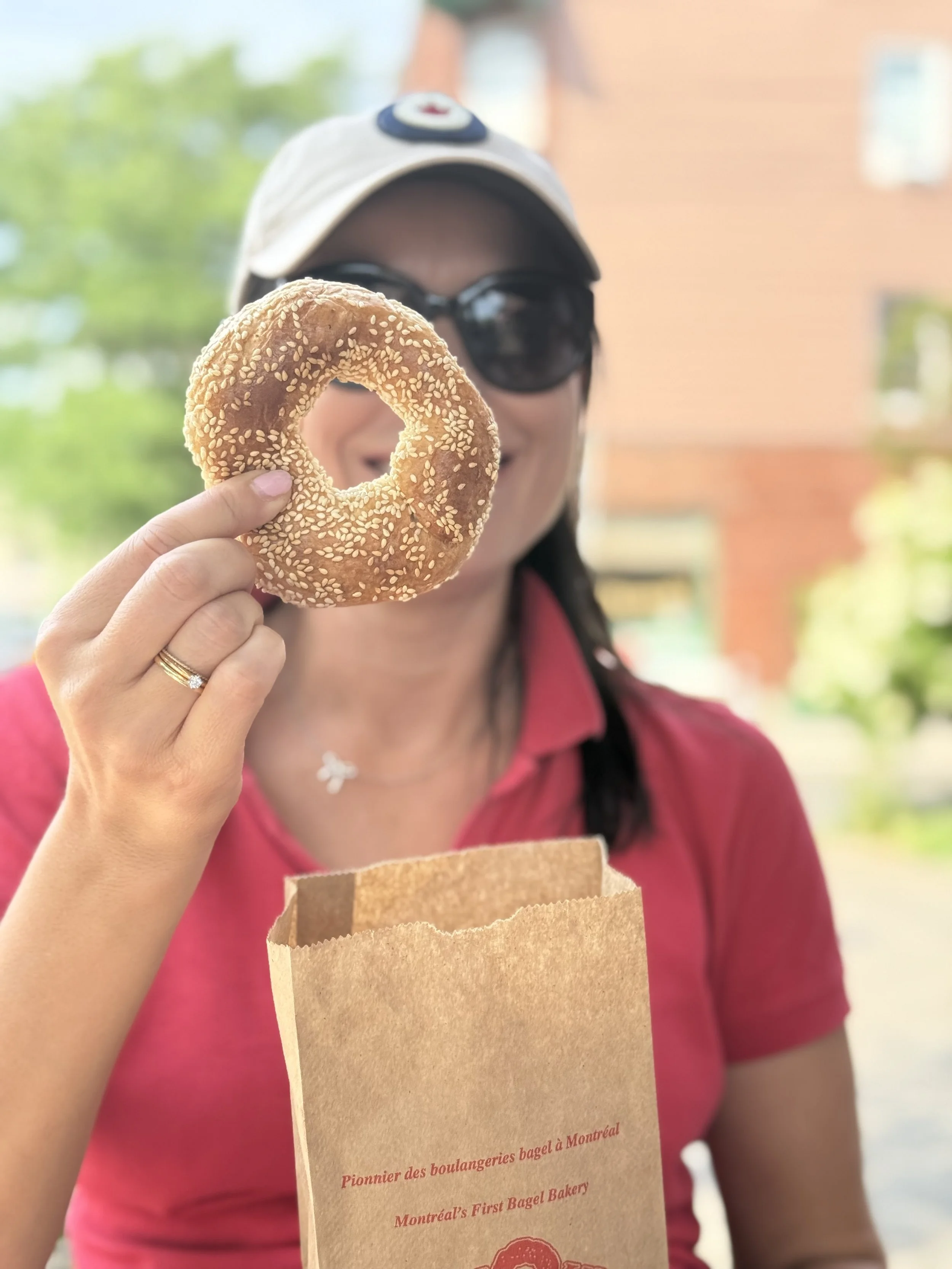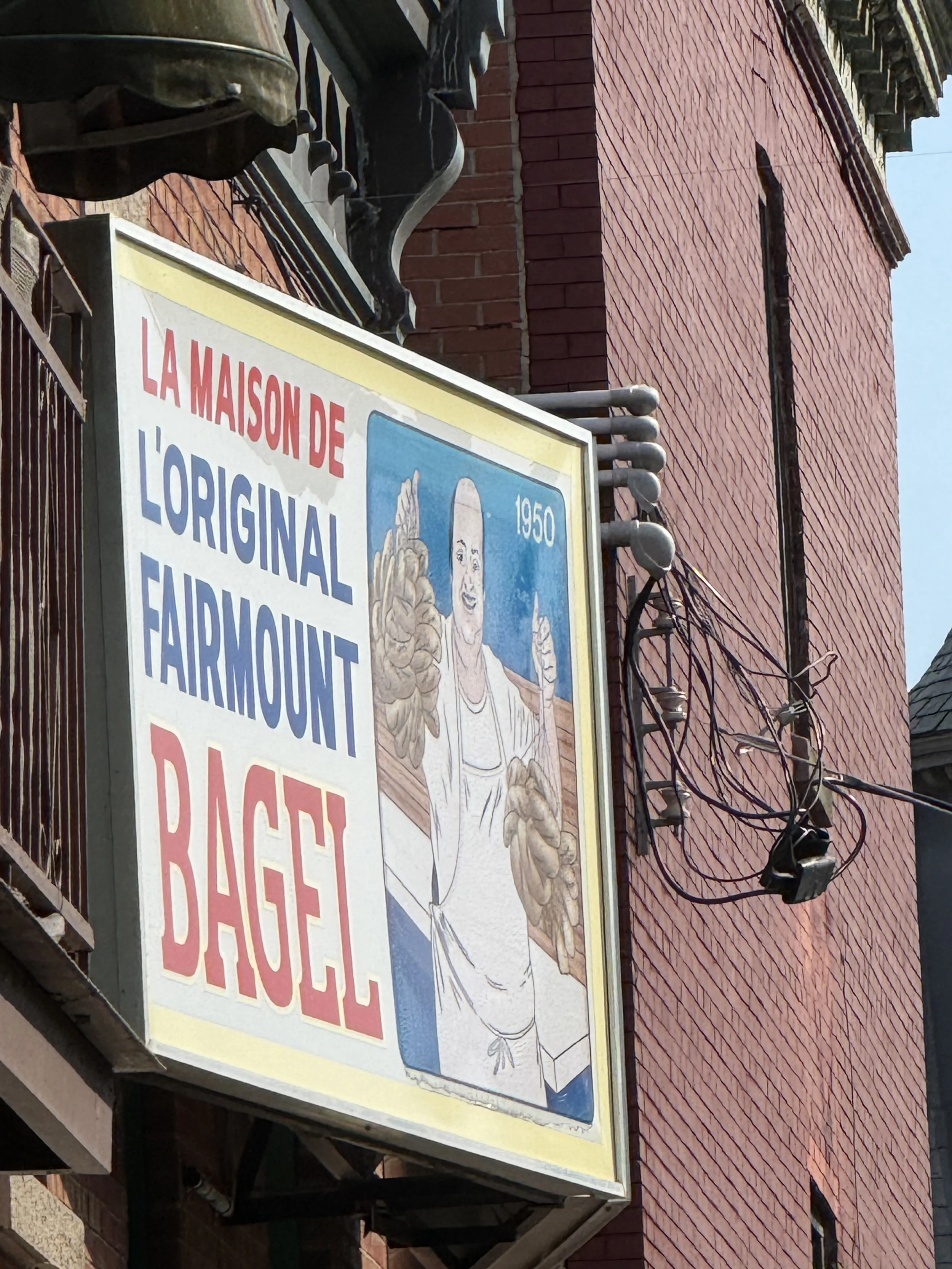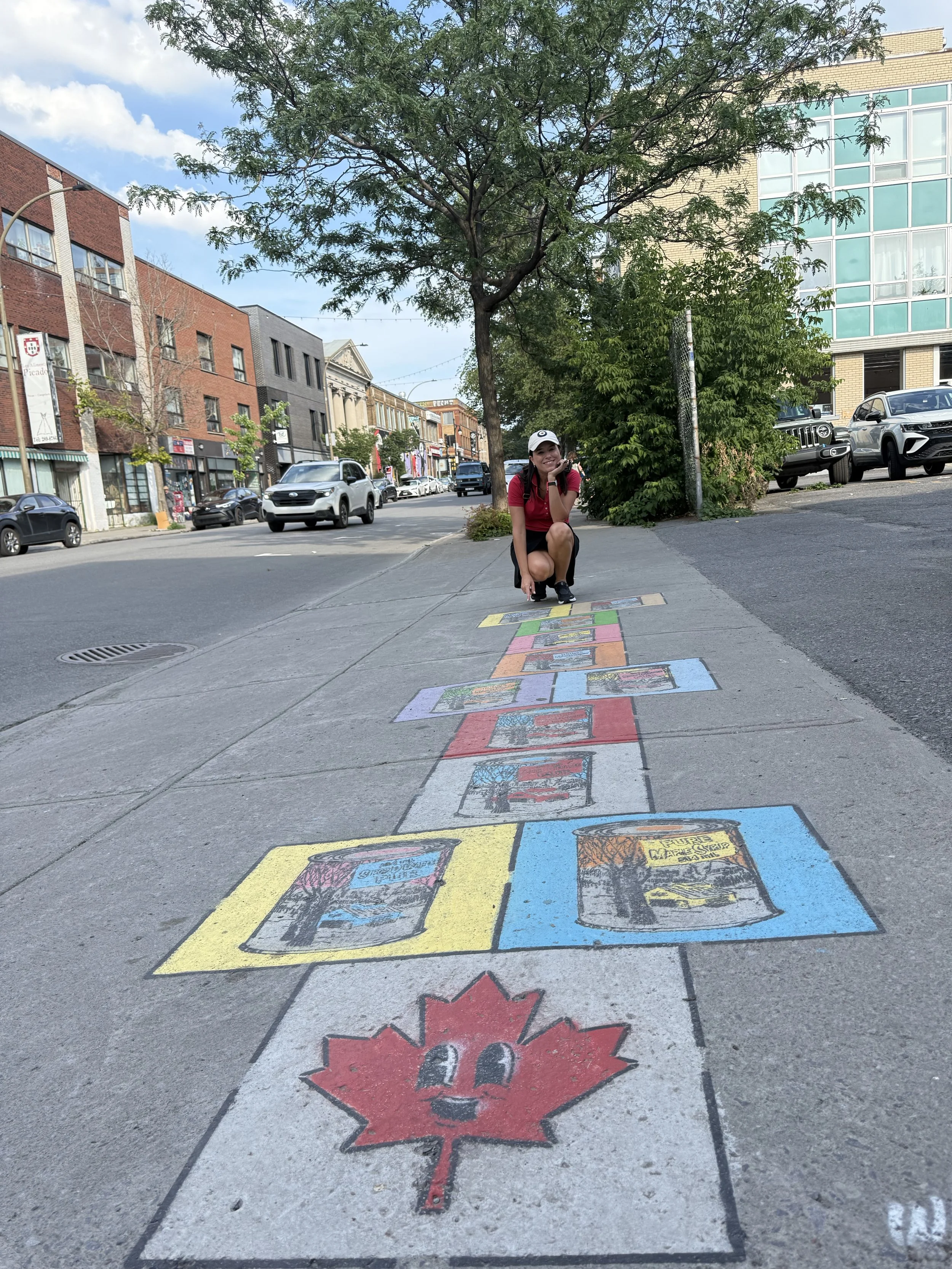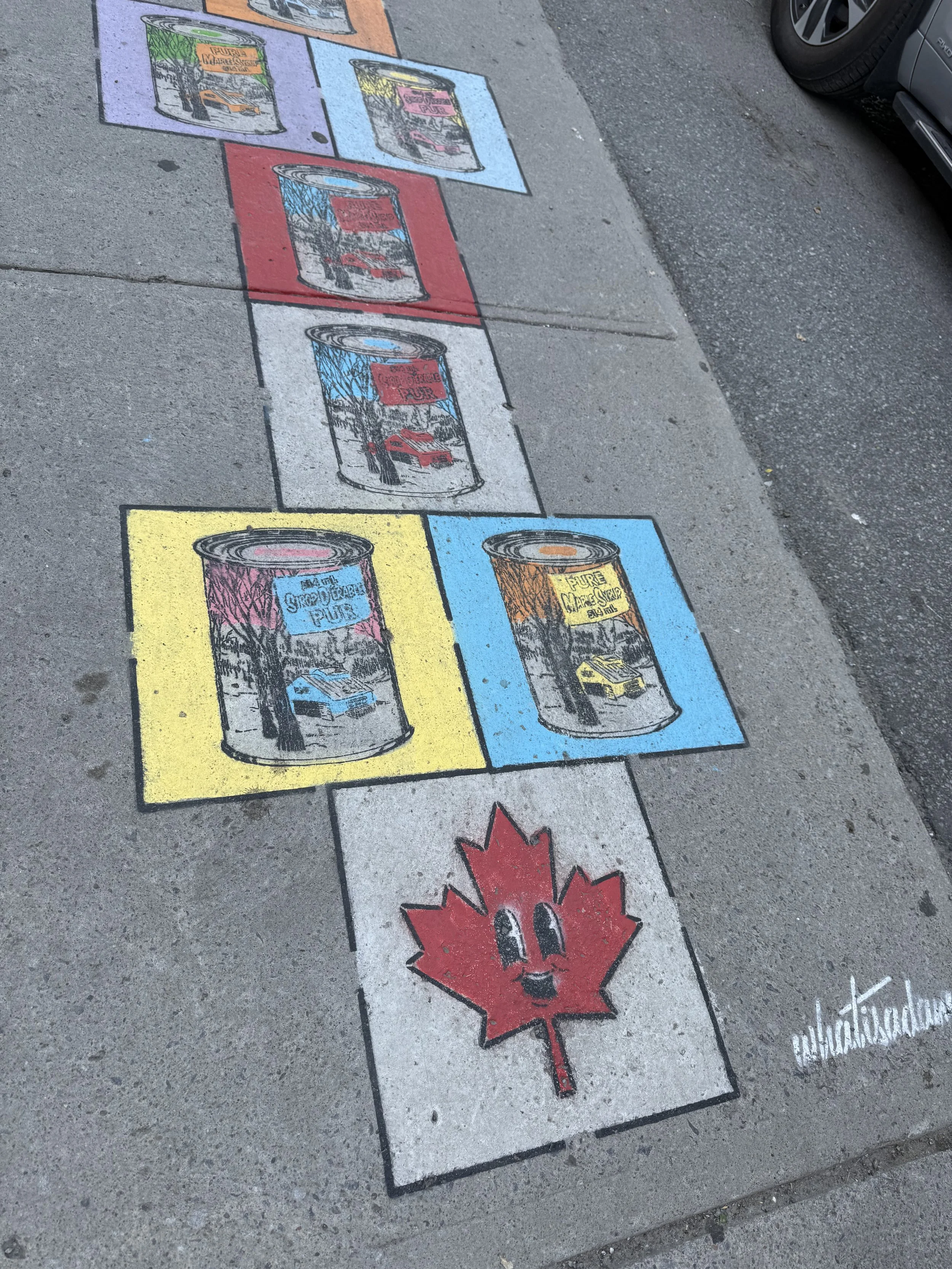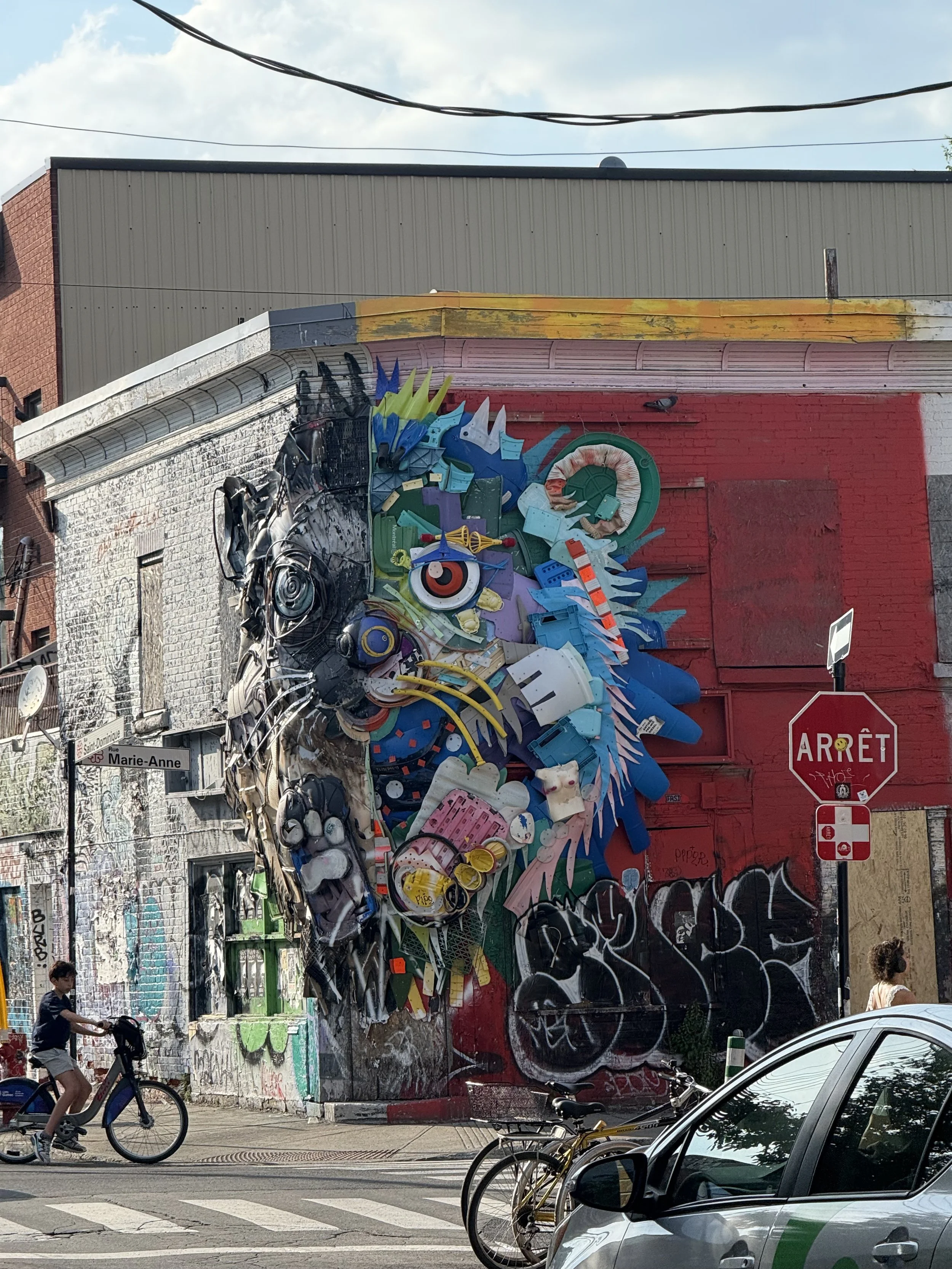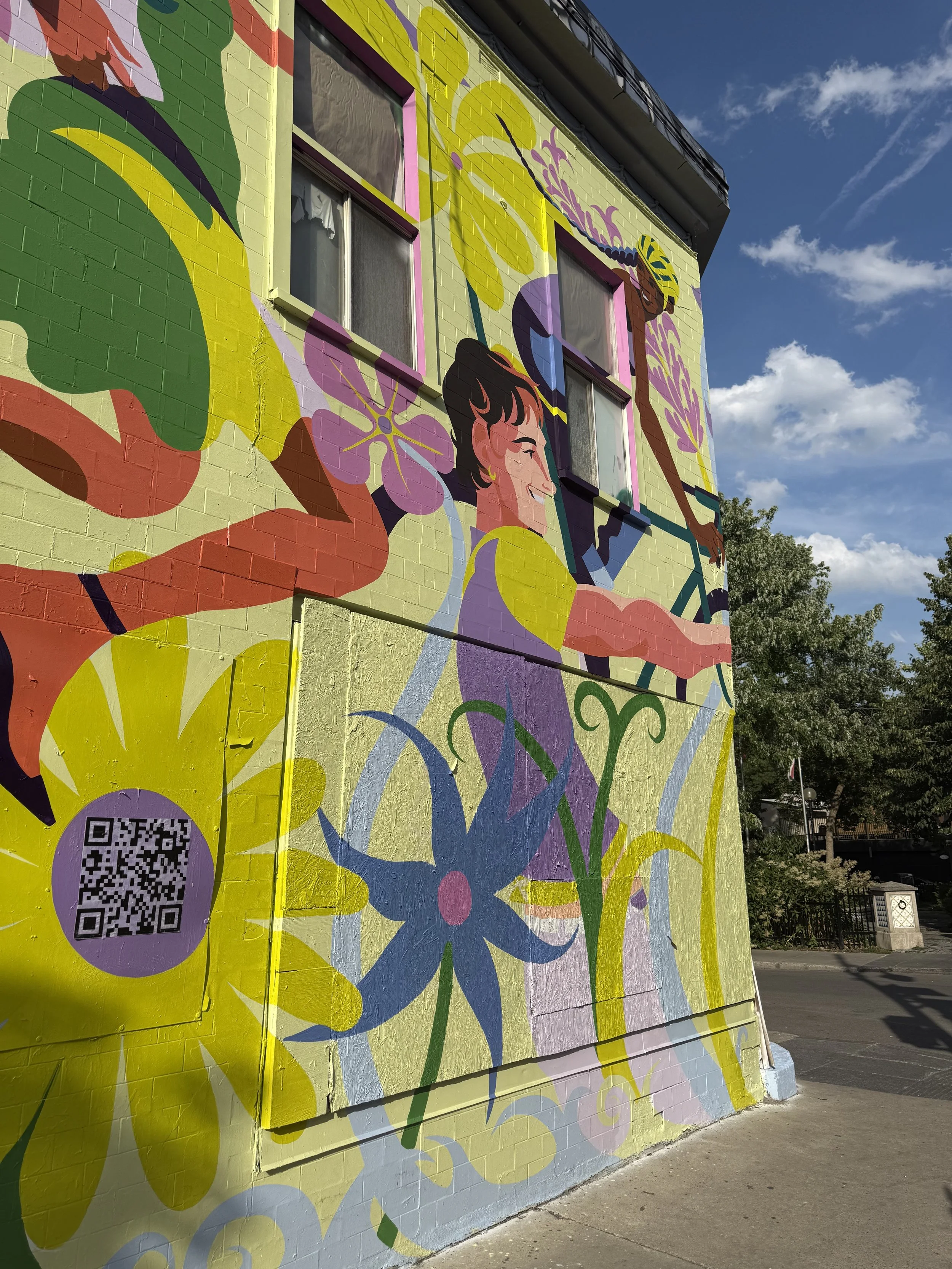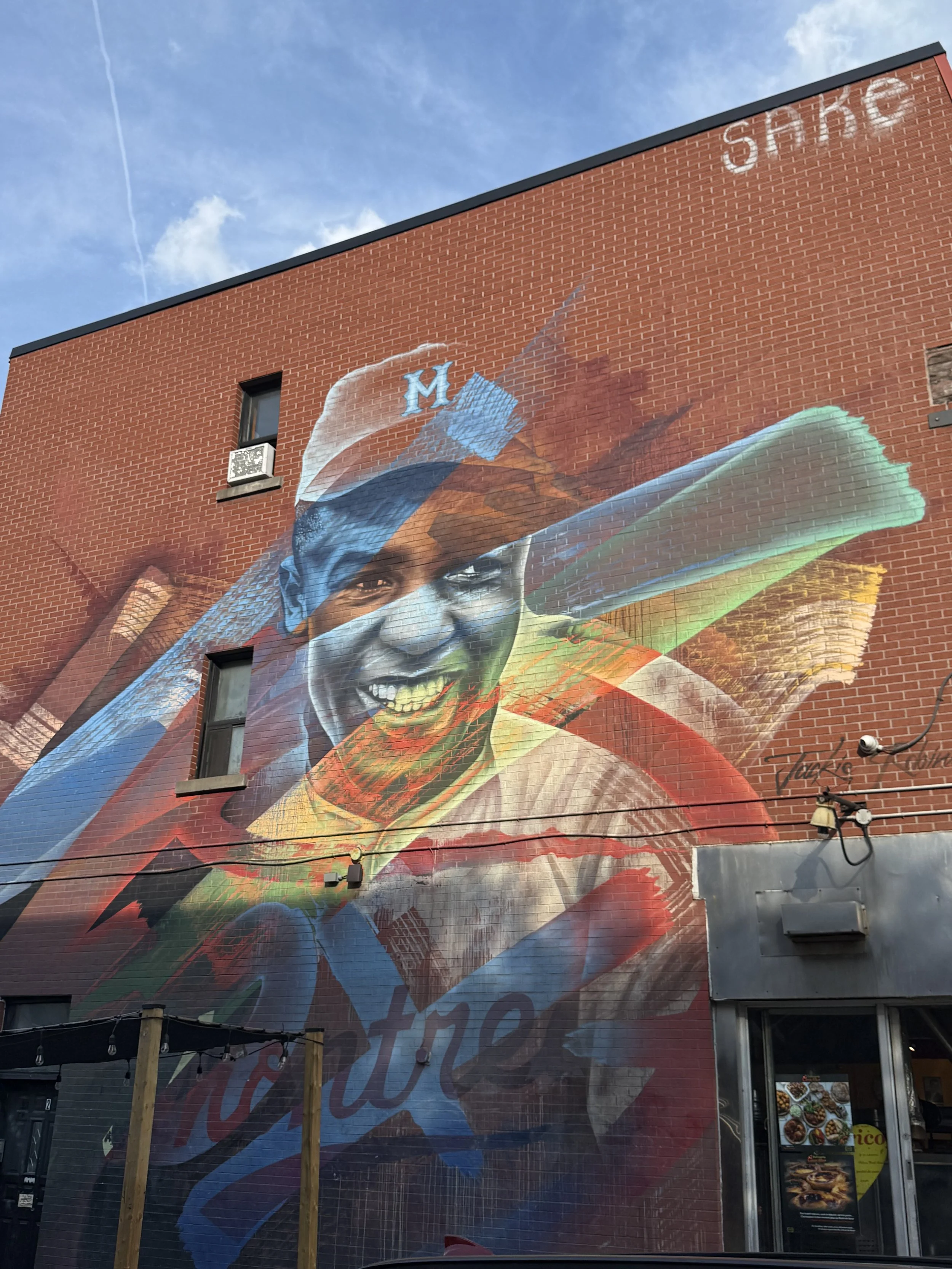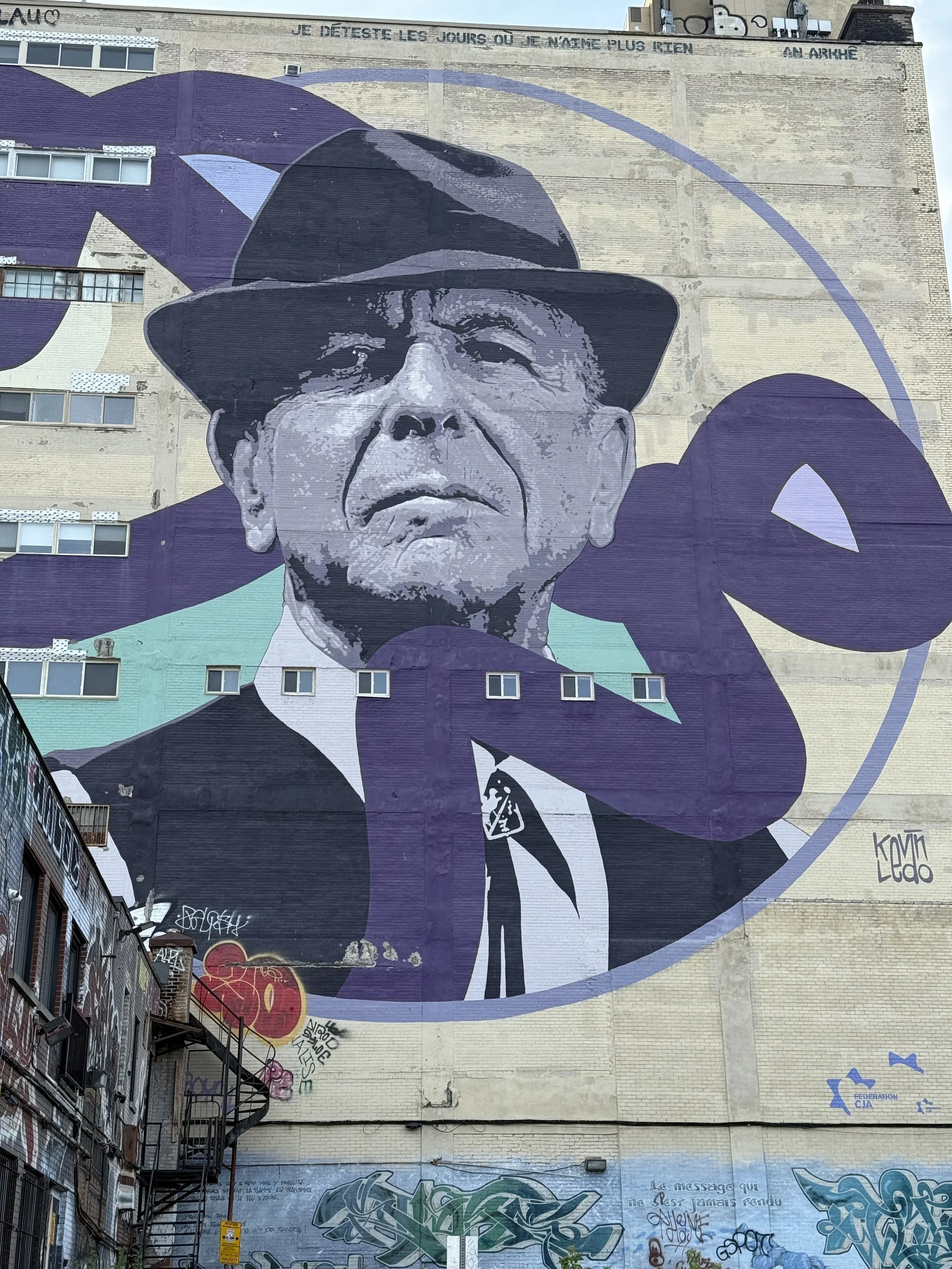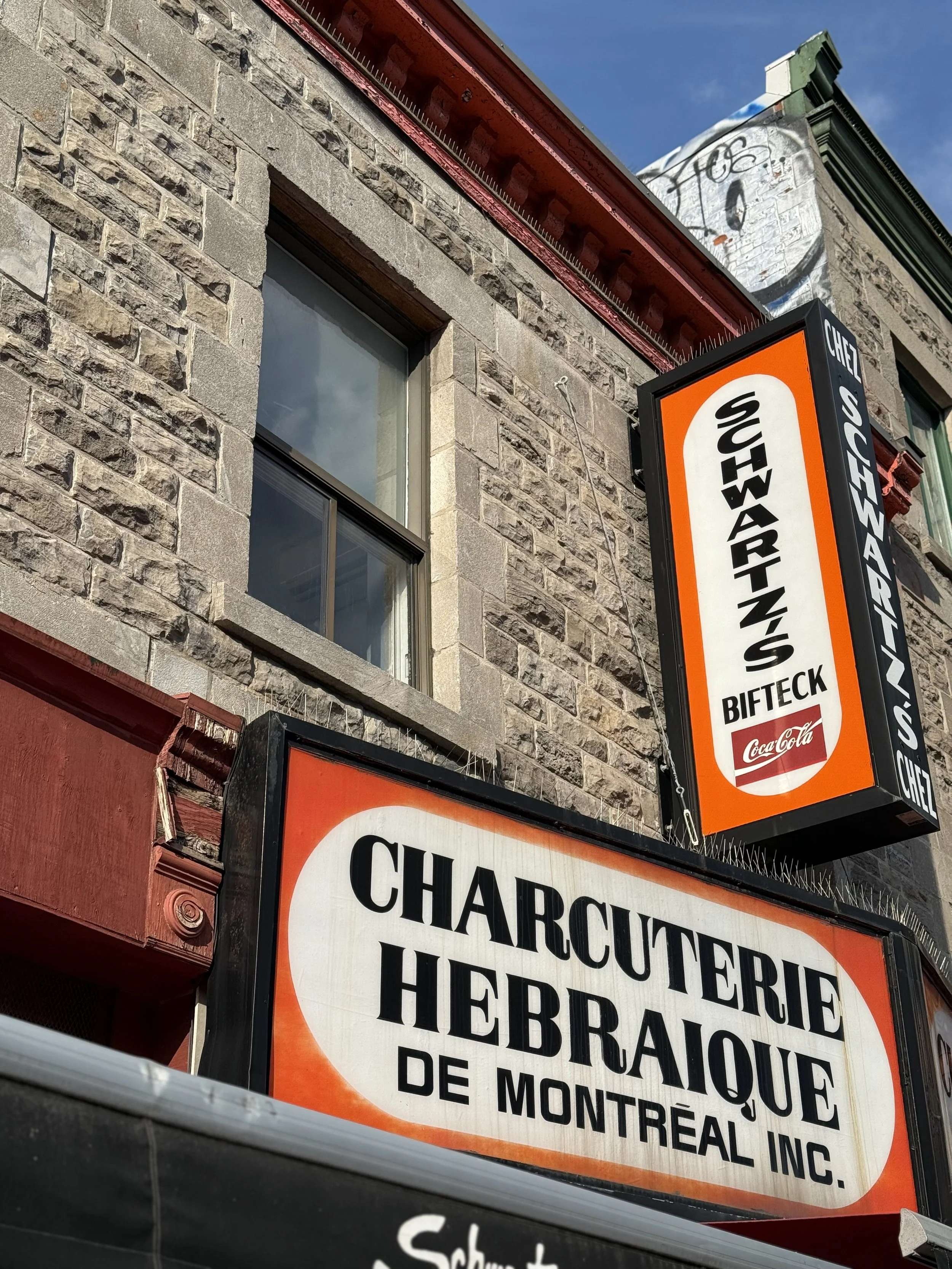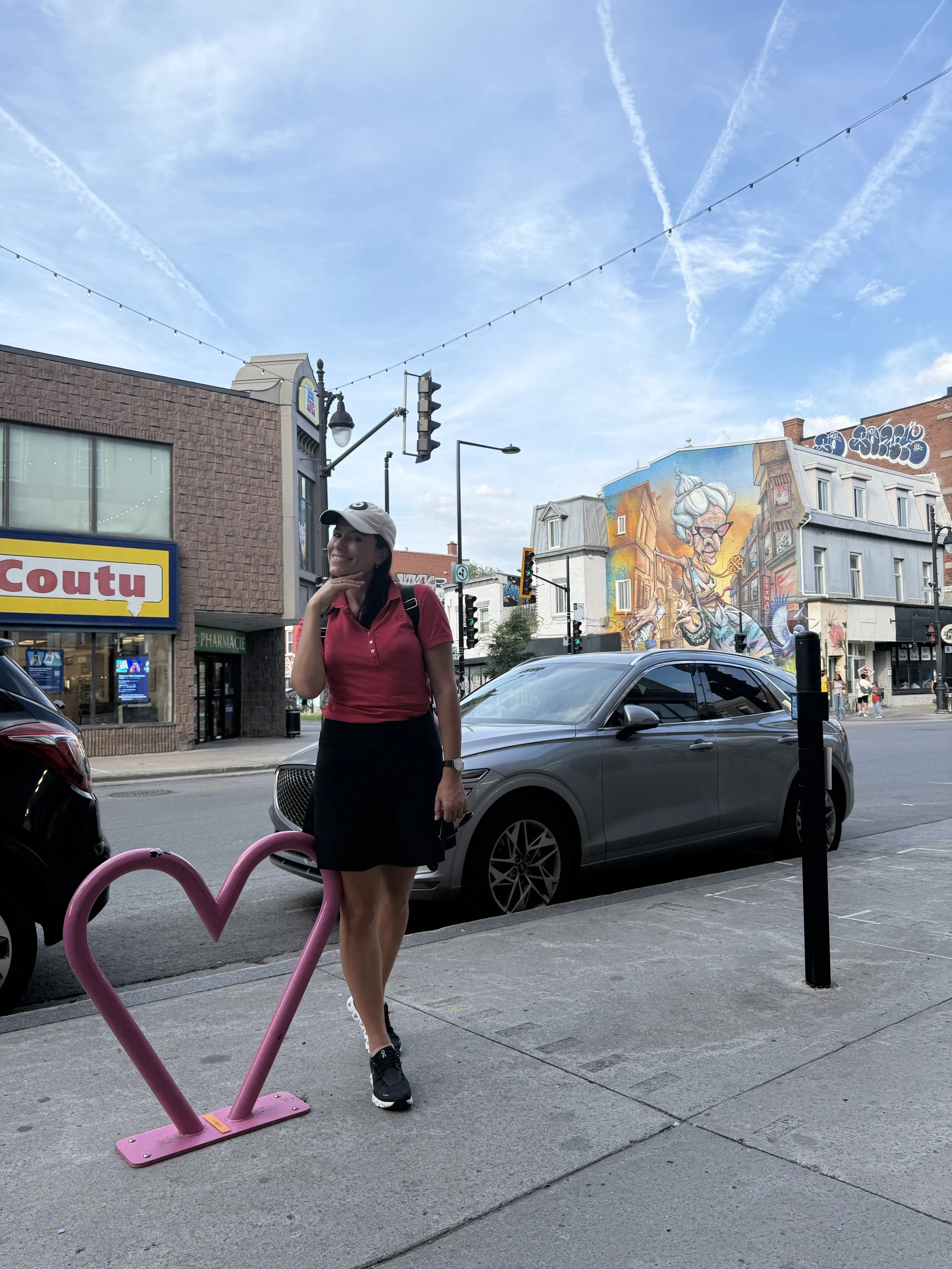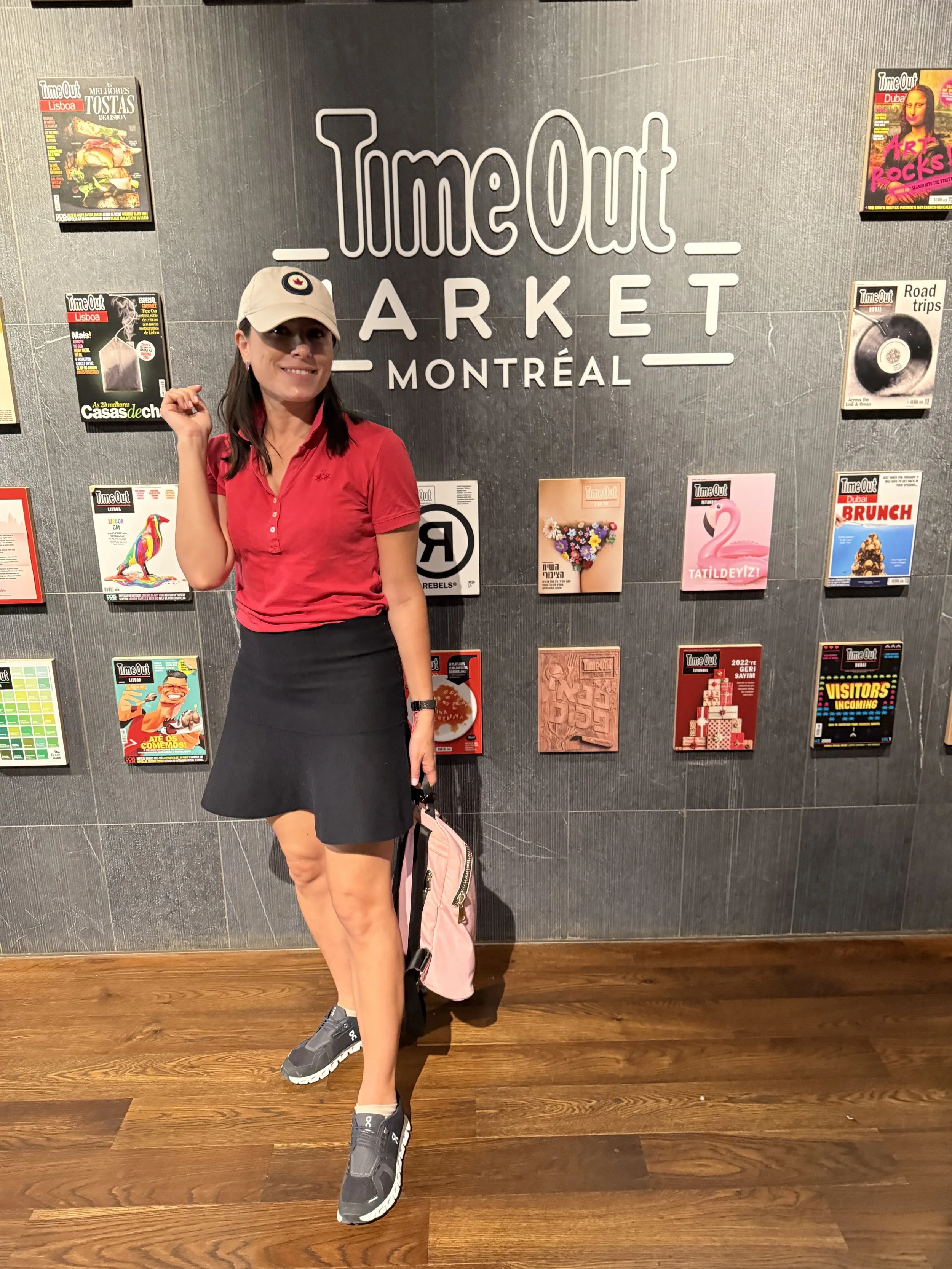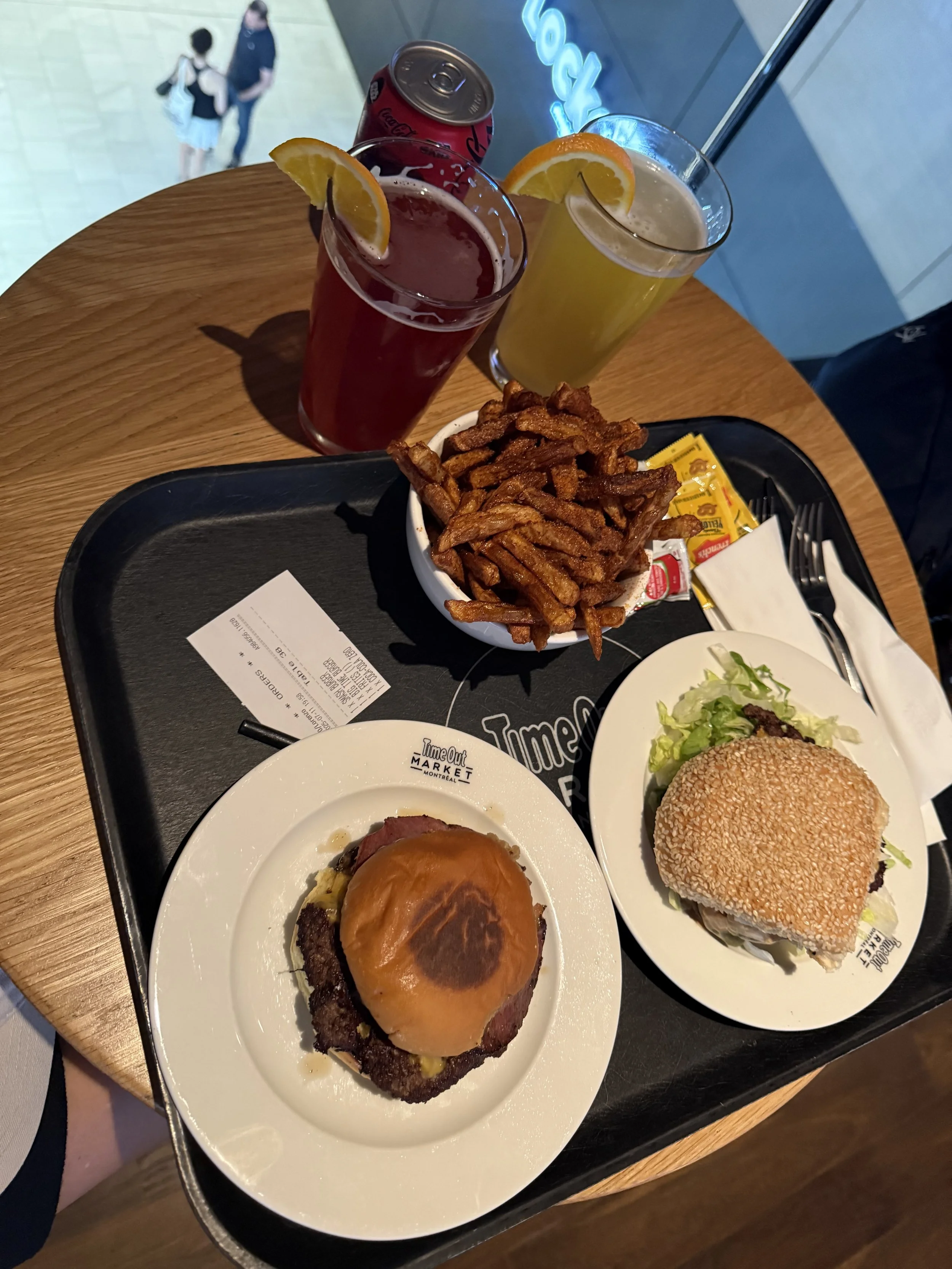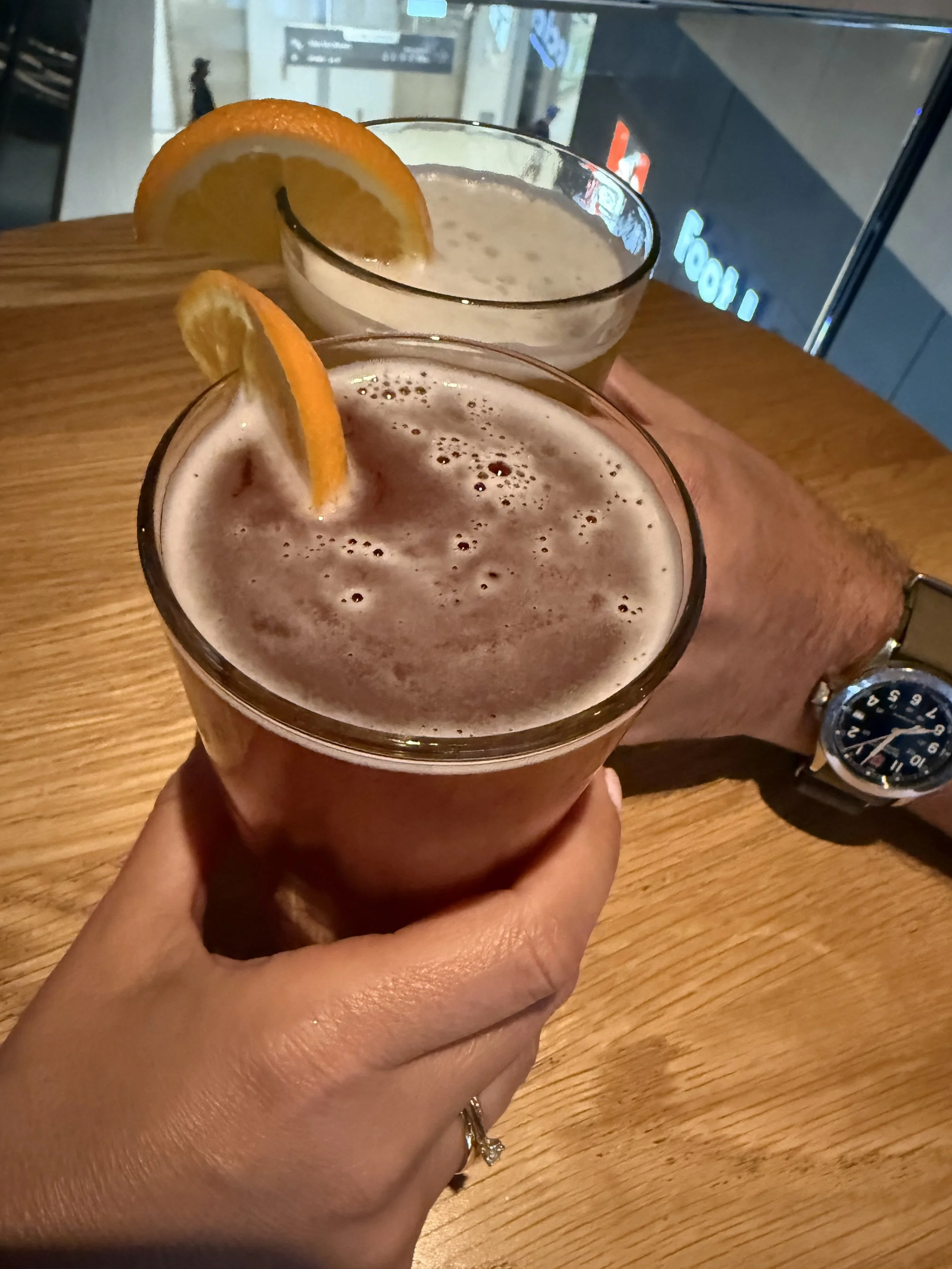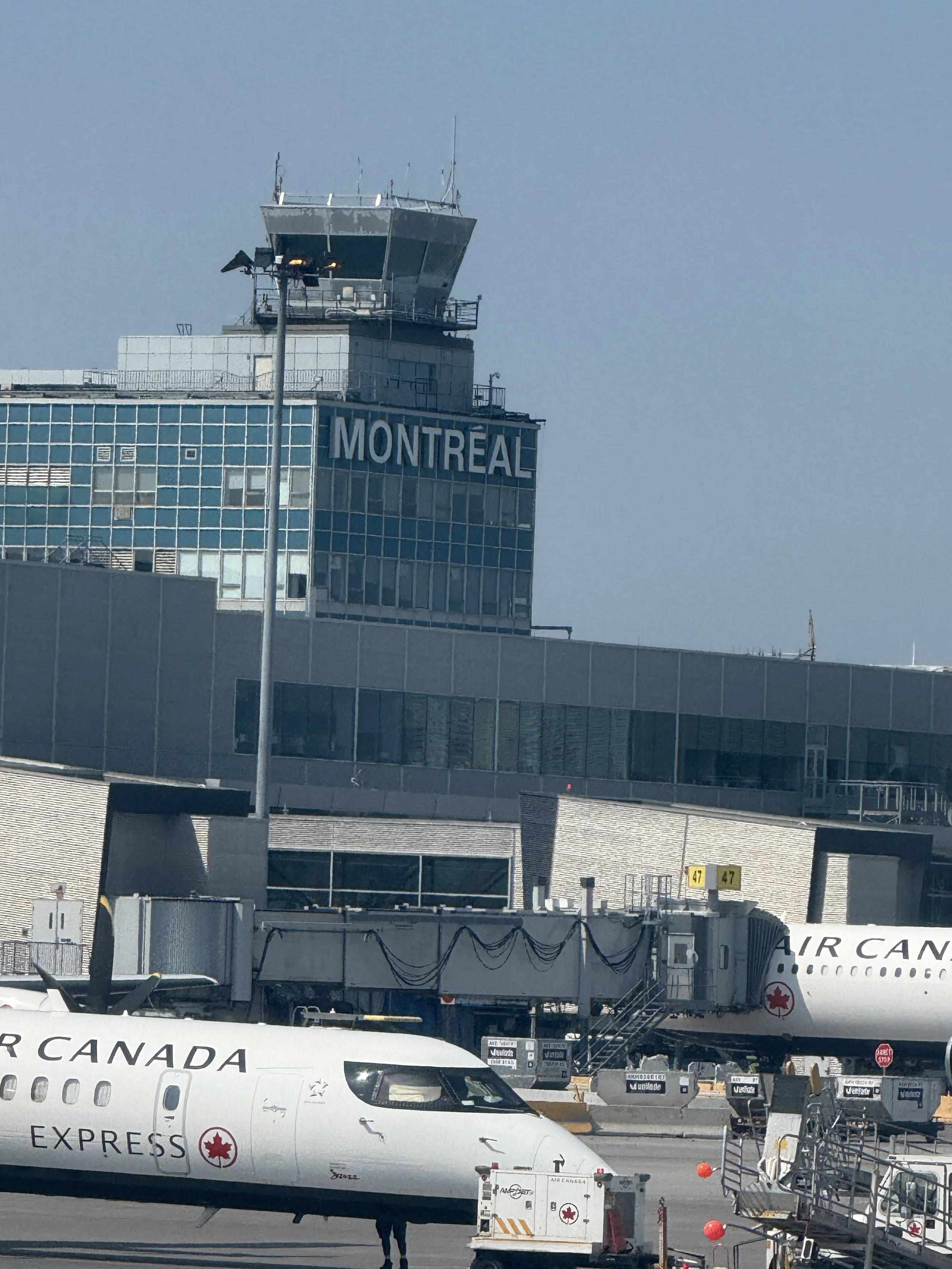Montreal
Design and cultureIt was Canada's most important metropolis until the 1970s, when it was overtaken by Toronto. Its name comes from the French translation of Mount Royal, spoken by 90% of its inhabitants. It remains an artistic and cultural center, with 100 annual festivals, some of which are famous: jazz, comedy, and Francophone music. It hosted the 1976 Olympic Games and is home to the Canadiens, one of the greatest ice hockey teams. It also hosts a Formula 1 Grand Prix.
Along with Berlin and Buenos Aires, it was one of the first three cities to be designated a City of Design by UNESCO in 2006. Each of its 68 subway stations was specially designed by different architects. It has one of the world's leading hubs for AI and e-games development.
Its center, Old Montreal, is the best preserved in the country. It is called the City of a Hundred Steeple, with 650 churches, many of them dating back to the 18th century.
The RESO, or Underground City, is a system of corridors for winter, with a total length of 32 km.
Being an island between rivers, with so many bridges, it created a traffic congestion problem that led it to become one of the cities with the most cyclists in the world.
Several famous people were born there, such as Leonard Cohen, Celine Dion, Oscar Peterson, and Beto Cuevas.
From the central station, we walked—passing by the Basílica Marie Reine Du Monde- to the Comfort Suites Downtown, hotel to drop off our things and go out to enjoy the city. The basilica is a cathedral from 1875, a replica of St. Peter's.
The first stop on our tour was the Tower of Songs, mural, a tribute to singer-songwriter Leonard Cohen. It is a joint work by local artist Gene Pendon and Los Angeles-based artist EL MAC.
On the way back, at the corner of Mackay and Maisonneuve, we saw the kinetic sculpture Di Octo, by American artist Anthony Howe, creator of the Olympic cauldron for Rio 2016. It is eight meters tall and represents a dandelion that moves with the slightest breeze.
Moving on to Sherbrooke, on the right we foundthe Museum of Fine Arts, Museo de Bellas Artes, famous for the thefts it suffered. On September 4, 1972, a commando group stole 18 paintings valued at $20 million, including a Rembrandt and a Delacroix that were never recovered. The museum collected the insurance money and bought Rubens' The Leopards, but a pigment study determined that it was painted 40 years after his death!
After that, we took a combination of buses to get to Notre Dame Basilica.
The cathedral was completed in 1843 and is in the English Neo-Gothic style. Its architect was an Irish Anglican, James O'Donnell. It is considered one of the top three Roman Catholic churches, after the Sagrada Familia and St. Peter's Basilica, due to its blue-toned interior. It has been the setting for funerals, baptisms, and weddings of the elite, such as Celine Dion's, for which only the left bell tower is used. Its organ concerts and light shows on the altar are famous. When you buy the entrance ticket, you are allowed to take photos and videos.
It is very beautiful, but we must confess that we did not find it that impressive.La catedral fue finalizada en 1843, es de estilo neogótico inglés. Su arquitecto fue un anglicano irlandés, James O´Donnell. Es considerada después de la Sagrada Familia y la Basílica de San Pedro como top tres de iglesias del culto romano, por su interior de tonos azulados. Fue escenario de funerales, bautismos y bodas de elite, como la de Celine Dion, para los que se usa solamente el campanario de la izquierda. Son célebres sus conciertos de órgano y sus espectáculos con luces en el altar. Comprando el ticket de ingreso, se encuentran autorizadas las fotos y videos.
Then we walked towards the river to get good views of the Ferris wheel, the Montreal Tower, a glass observatory, and one block further on, the Habitat 67. complex. It is an apartment building that is studied in architecture courses. It was the thesis project of Moshe Safdie, the same architect who designed the National Art Gallery in Ottawa. It consists of 354 concrete blocks in an “organized disorder.” The federal government only built 10 of the 22 planned blocks.
We returned via Rue Saint-Paul to walk through the Vieux Port, the Old Port, to the Marché Bonsecours, an agricultural market dating back to 1847. Just behind it is the Chapel of Notre Dame de Bonsecours, dating from 1771, where the remains of Santa Margarita Bourgeouys - Saint Marguerite Bourgeoys, a French nun who spread the faith in Montreal, are laid to rest. It is a center of pilgrimage for fishermen and sailors on the St. Lawrence River.
From there, we walked to the Champ de Mars station, where we took the metro to Lionel-Groulx. There we found the Marché Atwater.. It is the second largest market in Montreal, after Jean Talon, but much less touristy. It has a delicious selection of sweet and savory treats, so we didn't hesitate to stop for an unforgettable snack, delighting ourselves with an almond croissant.
When we left, Mr. @tripticity_ had a surprise in store for us. We visited the Atwater Coctail Club, ua speakeasy that does not take reservations or tables of more than six people. It was voted one of the 50 best bars in North America in 2024. You enter through a dark and dirty alley next to the financial district. We enjoyed drinks with a mini snack.
Then another bus took us to L’Oratoire Saint Joseph Du Mont Royal.
It is the largest church in Canada, built over a period of 60 years until 1941. It is the only exception to the local law preventing any building from being taller than the summit of Mount Royal - Monte Real. The dome is a mix of the designs of Florence Cathedral and St. Peter's Basilica. Inside, the statue of St. Joseph stands out.
The huge oratory perched on top of the mountain offers a remarkable view of the city. We sat there and enjoyed an unforgettable sunset. It coincided with the flight path of planes heading to the international airport, so the scene was truly breathtaking.
The next day, we planned to travel to Quebec, where we stayed for two nights, then return to Montreal for one more day before our international flight back, which departed from Montreal.
That last day in Canada was another memorable one. Upon arrival, we decided to do a little shopping in the city's commercial district, taking advantage of the proximity of our hotel, the Comfort Suites Downtown.
Then we took a bus to Plateau Mont-Royal. Mr. @tripticity_ had planned to do a challenge of the city's classic bagels.
It's almost like the River-Boca of Montreal between the St. Viateur y Fairmount. boulangeries. The bagel originated in medieval Poland. In 1880, the mass migration of Jewish families from Eastern Europe began. In New York, they are larger and fluffier, while in Montreal, they are pre-cooked in sugar water and remain crispy. Fairmount claims to be the city's first bagel shop, while its rival opened in 1957, and they compete for the loyalty of the locals.
First, we tried St. Viateur Bagel. We bought a plain bagel and another with onions. Very tasty.
Then we moved on to Fairmount Bagel. Again, delicious. We couldn't decide on a favorite.
Ideally, they should be eaten immediately, and at most within 5 hours of being made: both bakeries roll them by hand and have wood-fired ovens burning 365 days a year.
After the culinary duel, we continued on to Saint-Laurent. The bohemian neighborhood of La Meseta was home to artists such as writers Michel Tremblay and Mordecai Richler, and the multifaceted Leonard Cohen.
We strolled down Boulevard Saint-Laurent at a leisurely pace, losing ourselves in the side streets. We passed Hof Kelsten, the famous sandwich shop. Then we photographed Leonard Cohen's house and enjoyed the street art we found at 4000, especially the Leonard Cohen mural by local artist Kevin Ledo.
We walked back to the Comfort Suites Downtown along the pedestrian street, taking advantage of the warm Friday when everyone seemed to be out and about. It was all very lively.
On the way, almost without meaning to, we came across the famous Eaton Centre, shopping mall, and inside, the impressive Time Out Market. It was our last night in Canada, so we decided to have dinner there, enjoying the live DJ and the lively market, with dining options from all over the world.
The next morning, an Uber took us to YUL airport where we said goodbye to the vast country of Canada. On the way, from the highway, we could see Maison Rose, in the distance, an icon of Montreal street art. It is a house on the abandoned silos of a malting plant, which appeared there in 2019. By an anonymous artist, neither the execution nor the motives were ever attributed.


